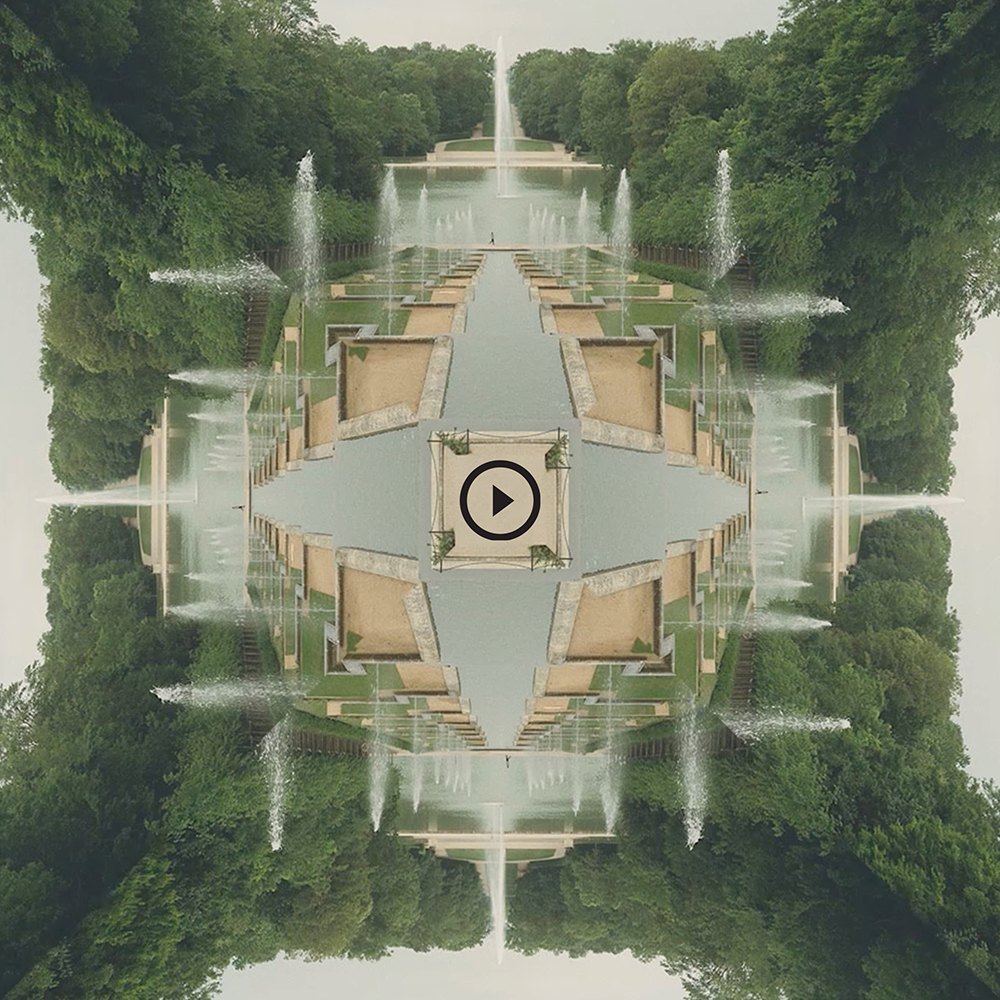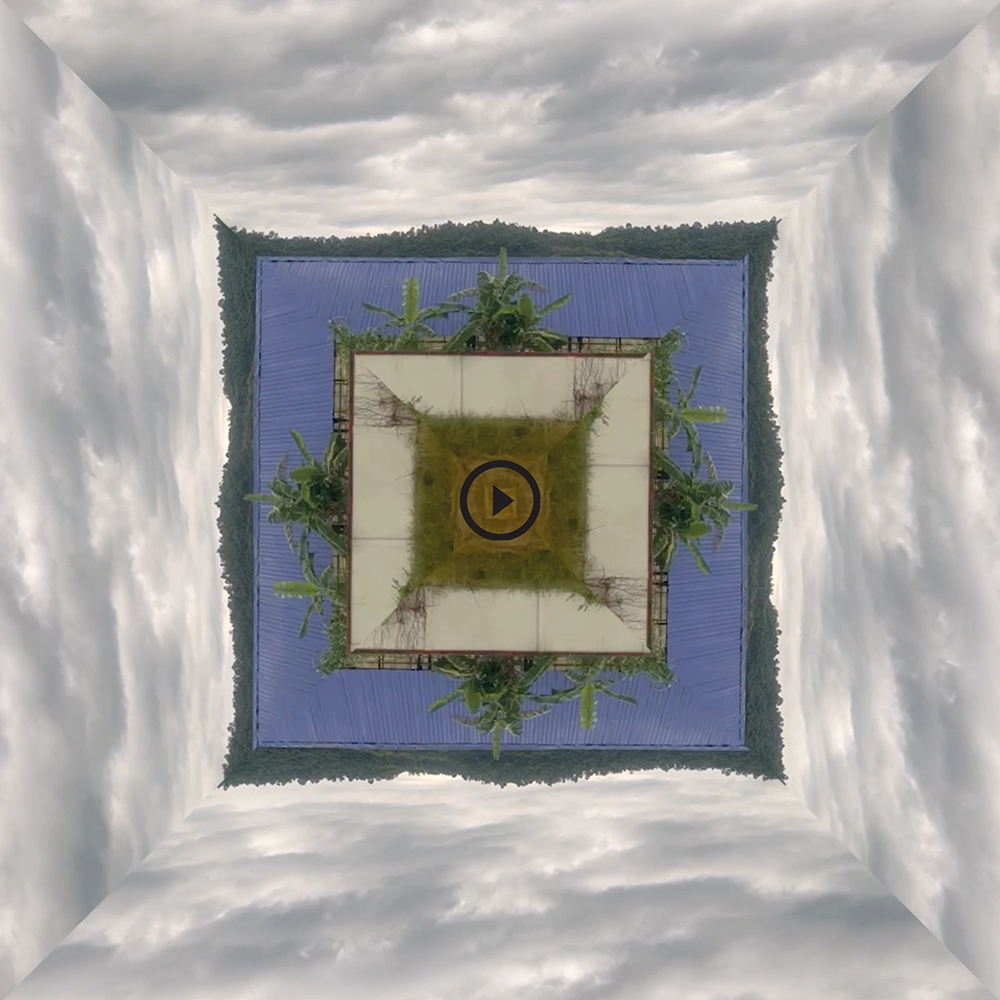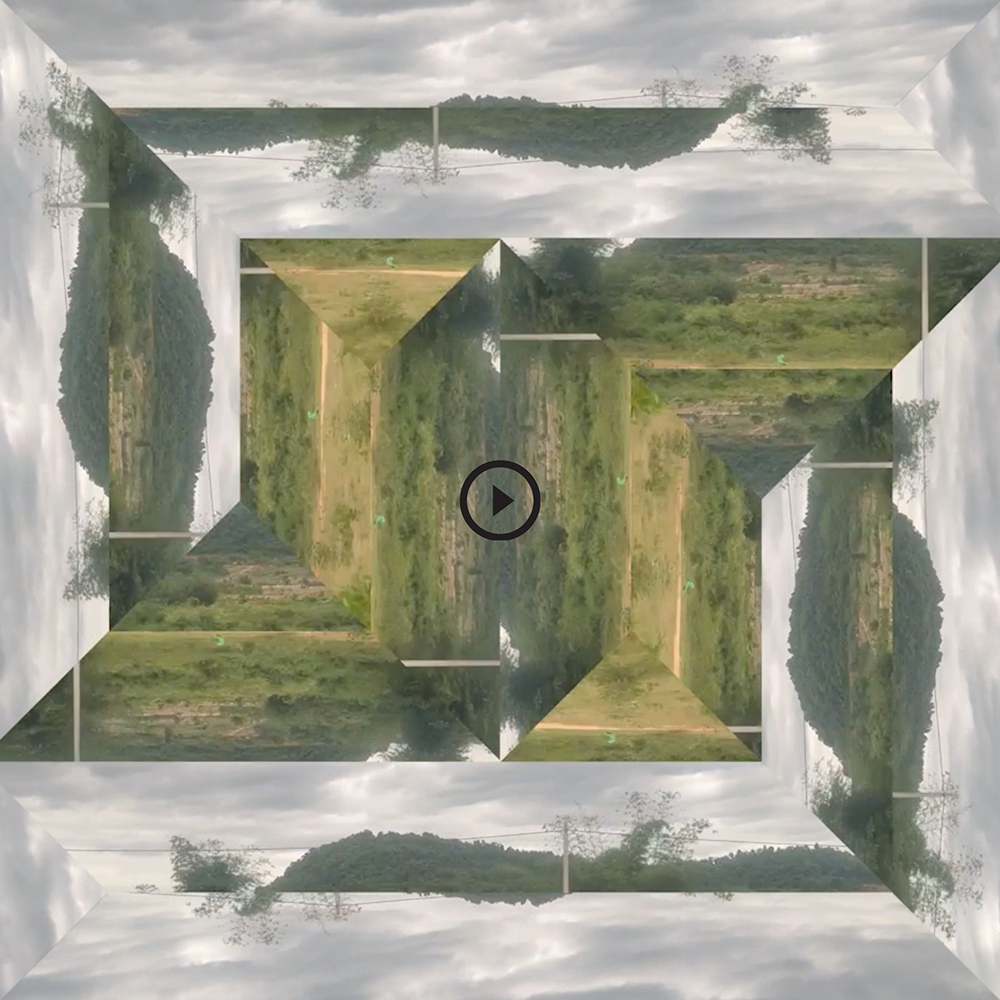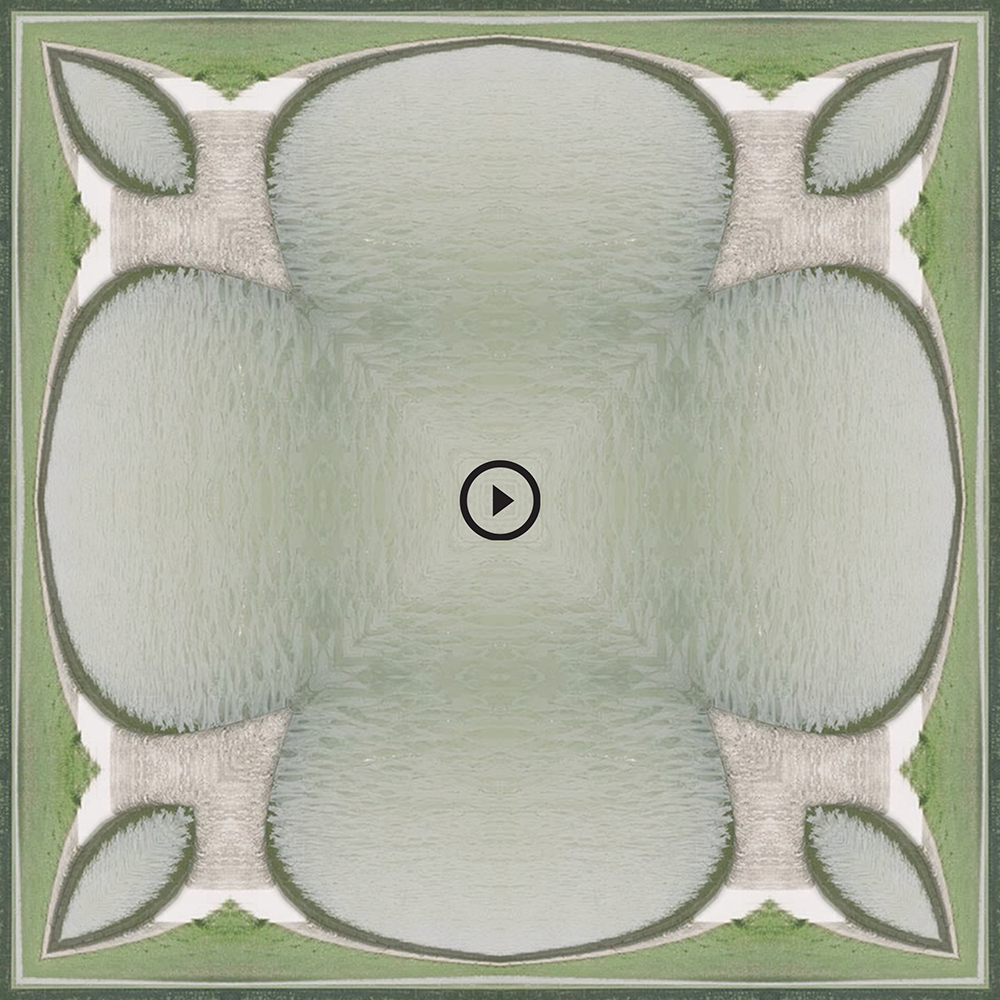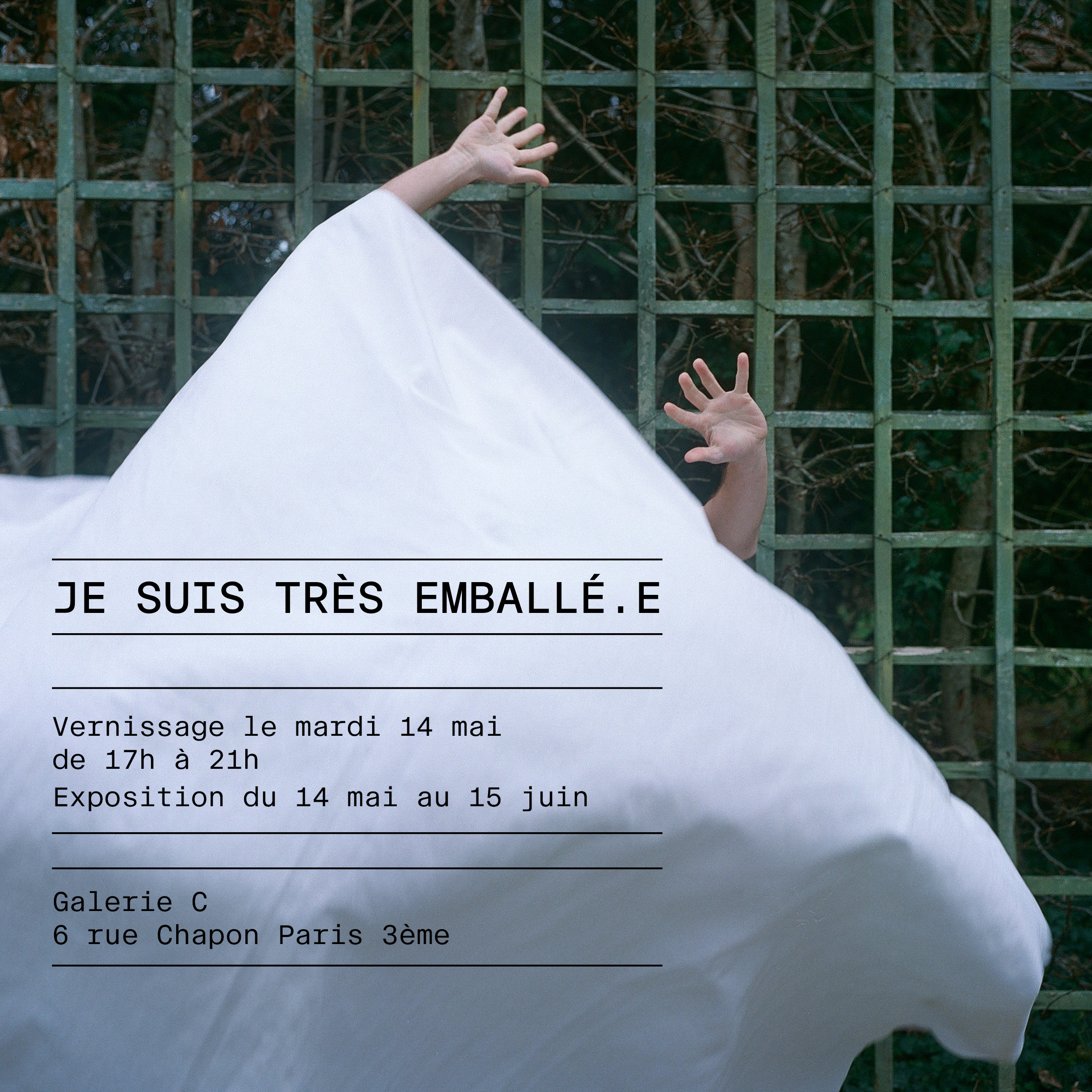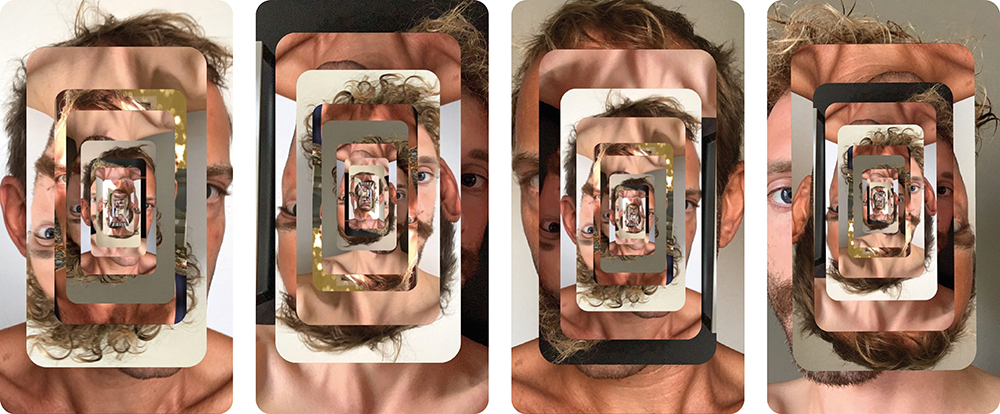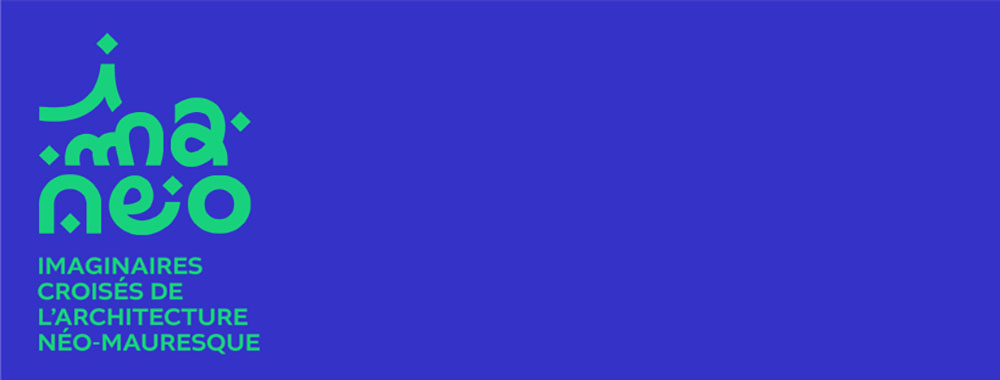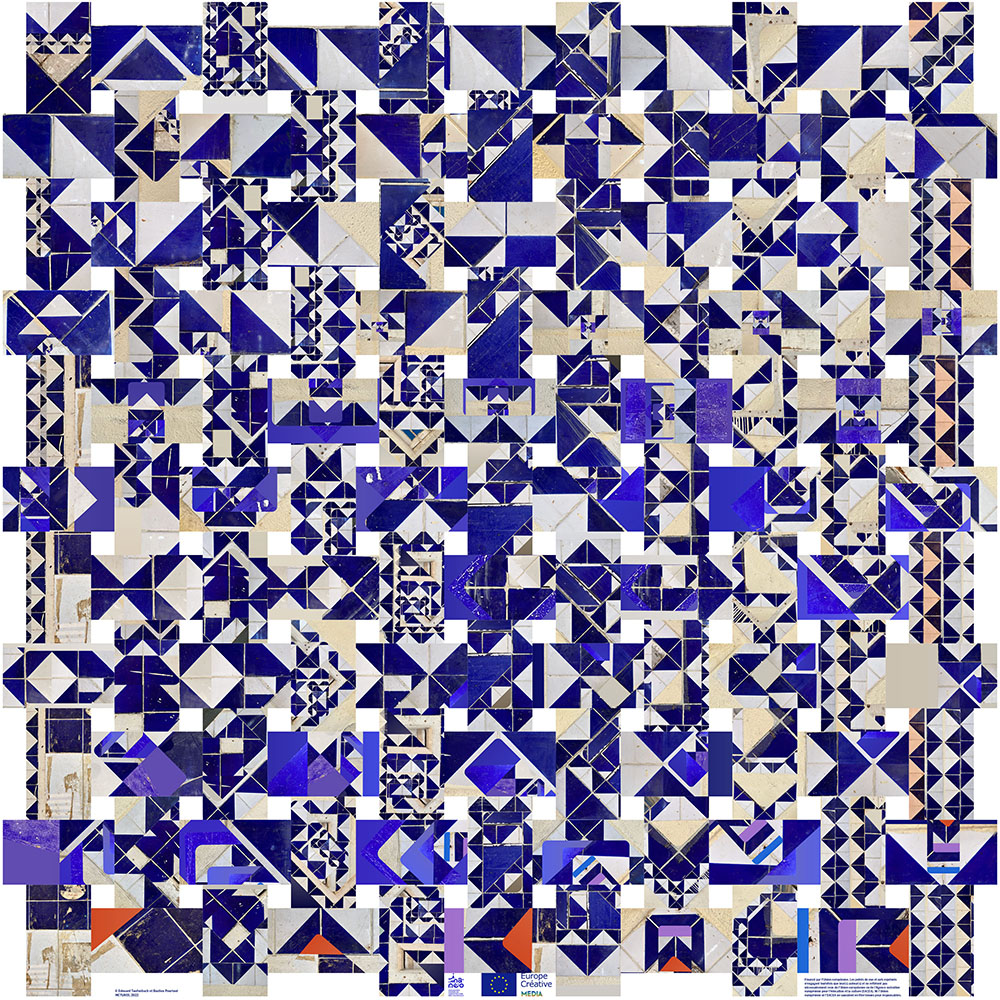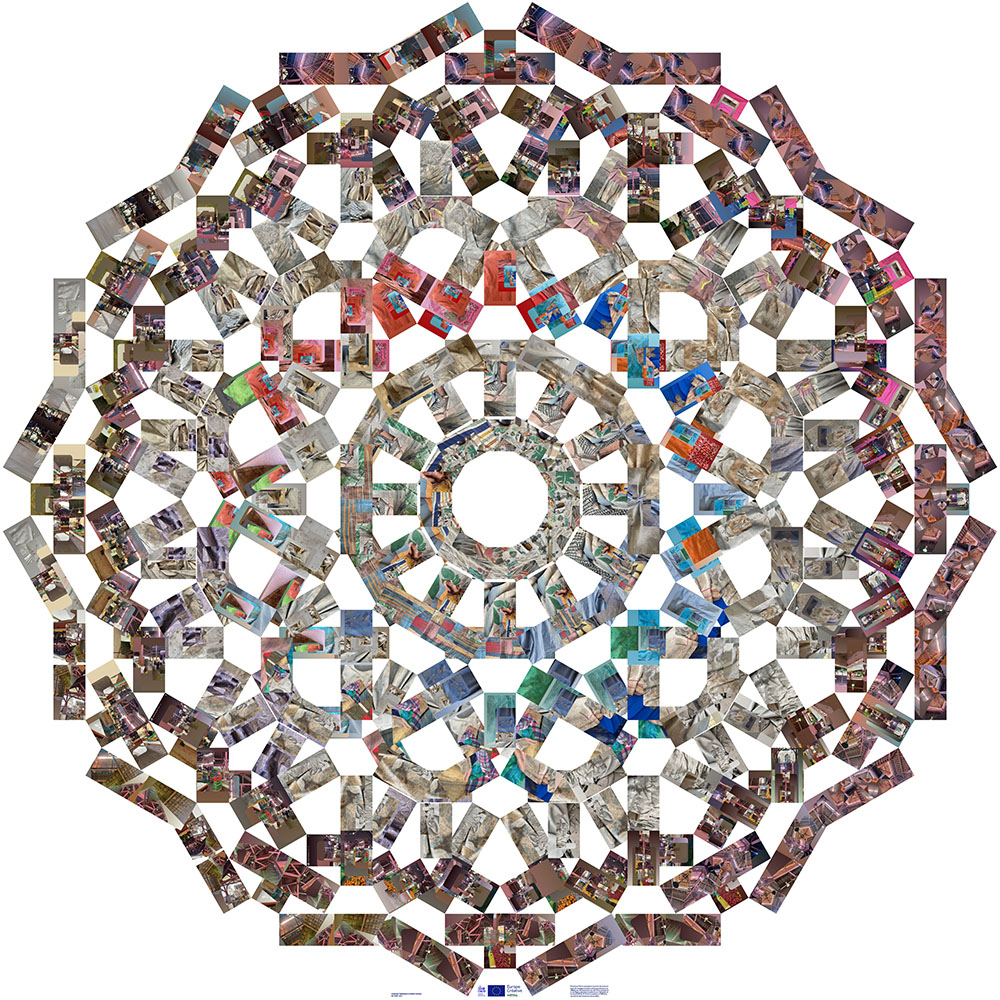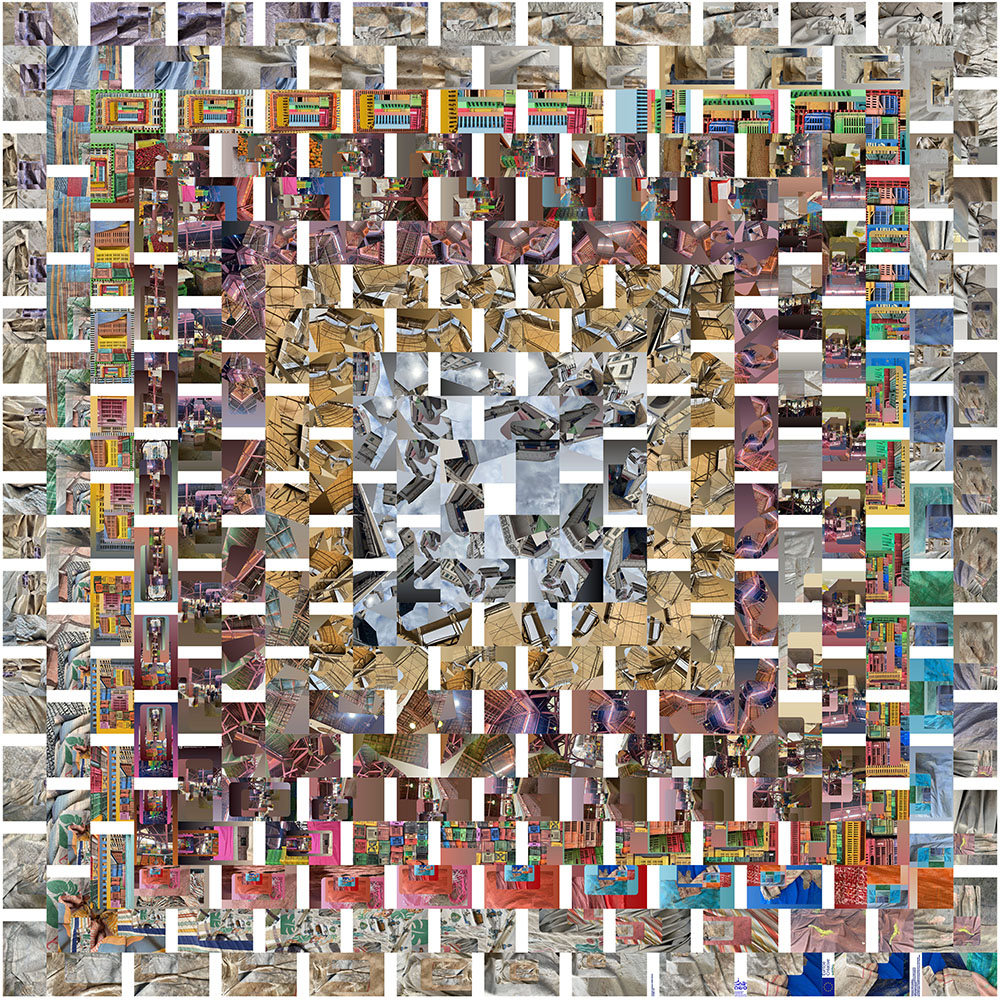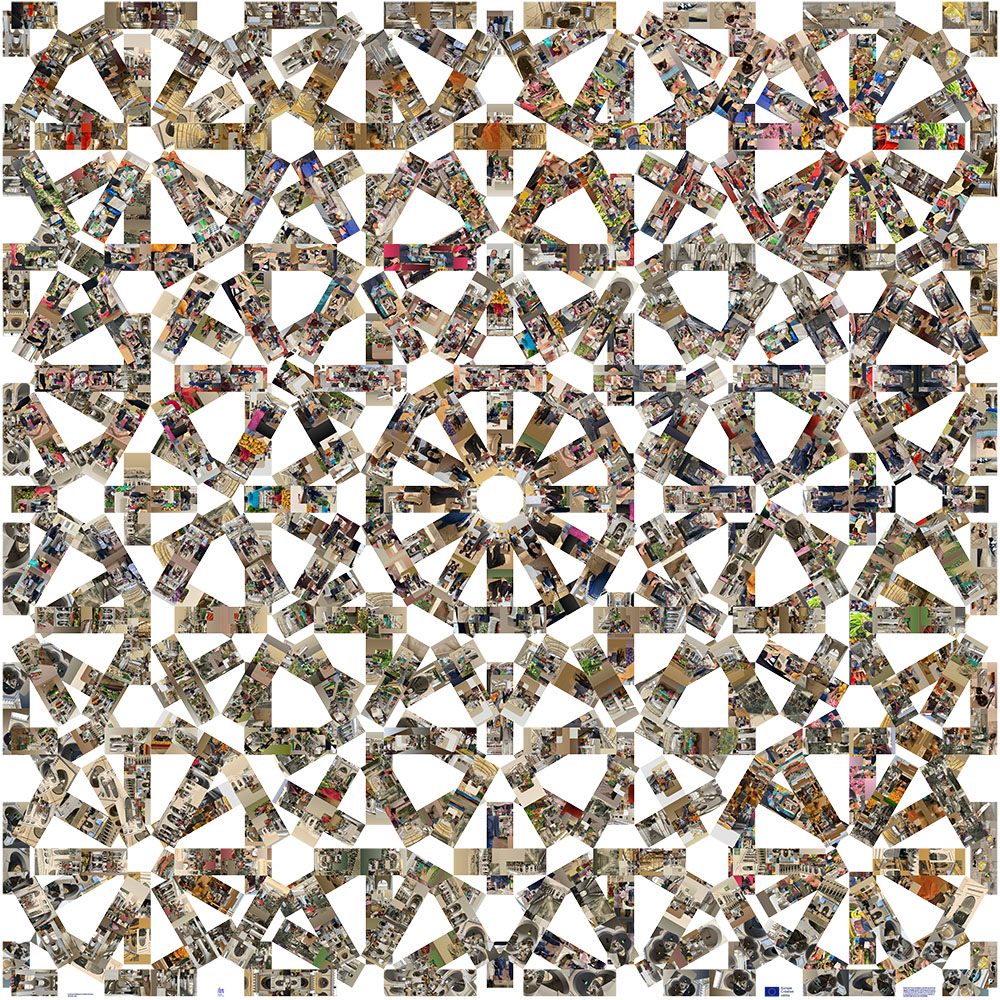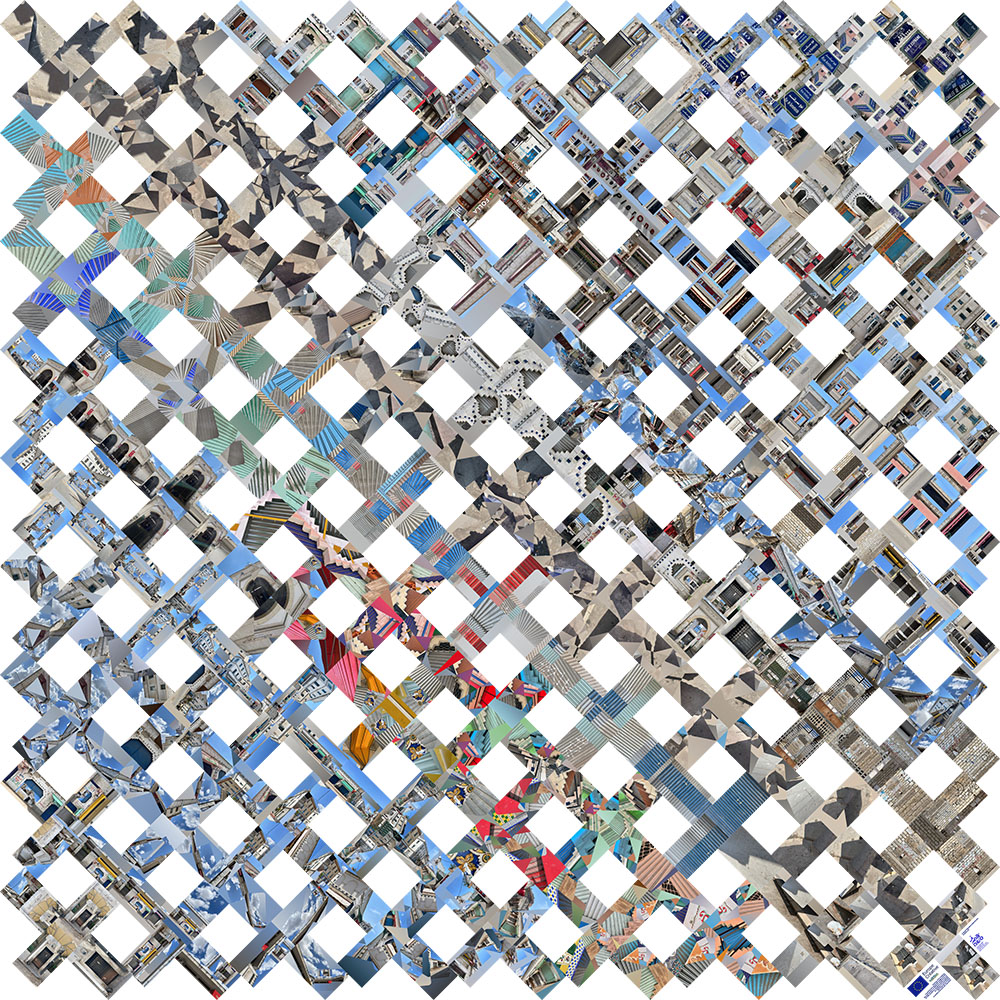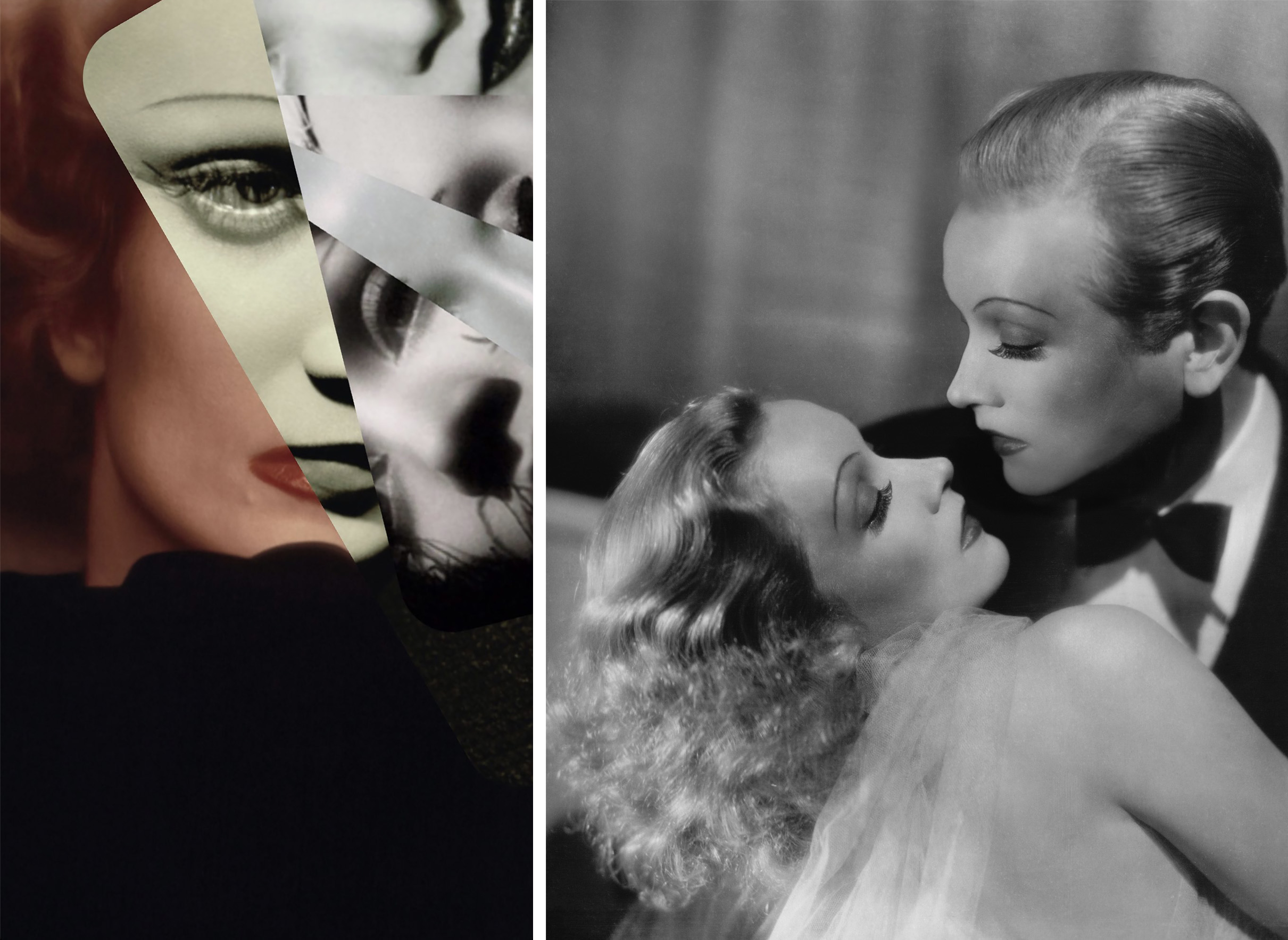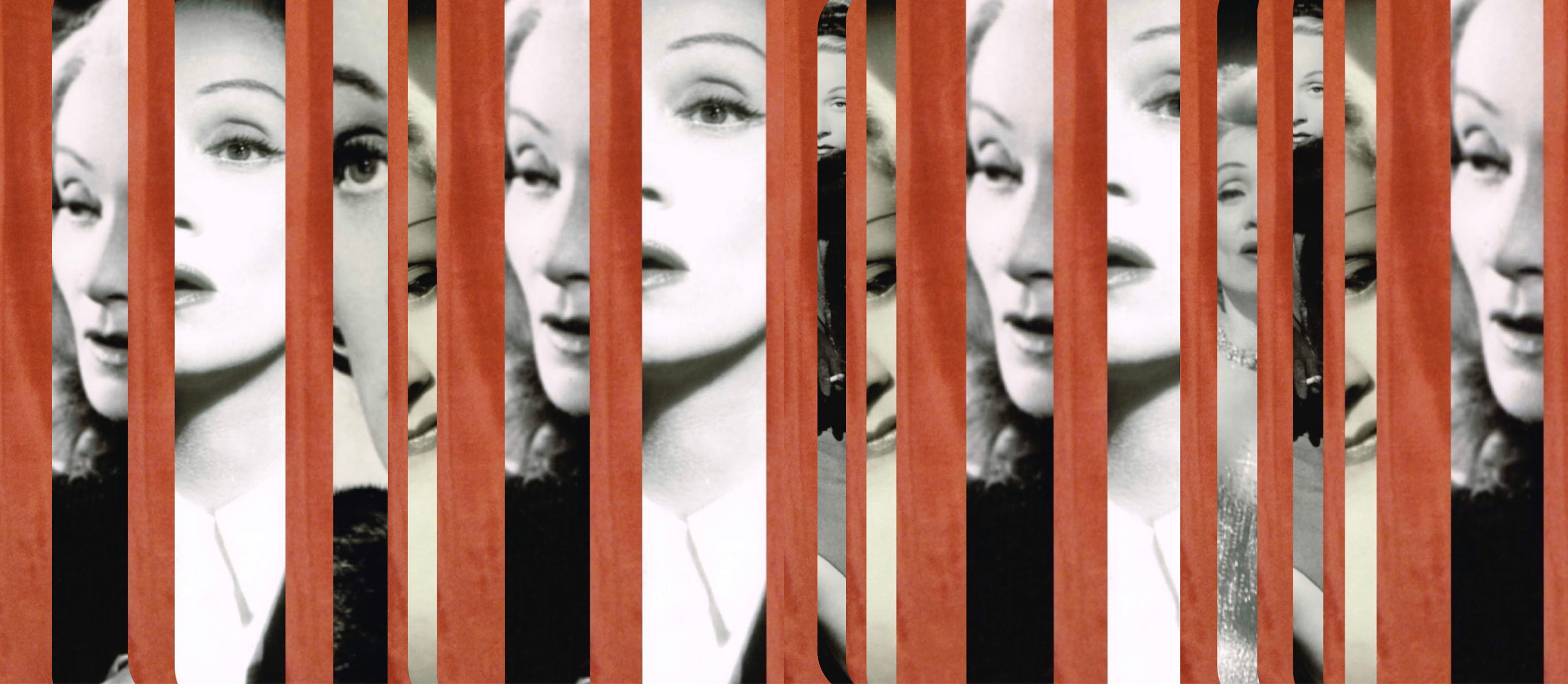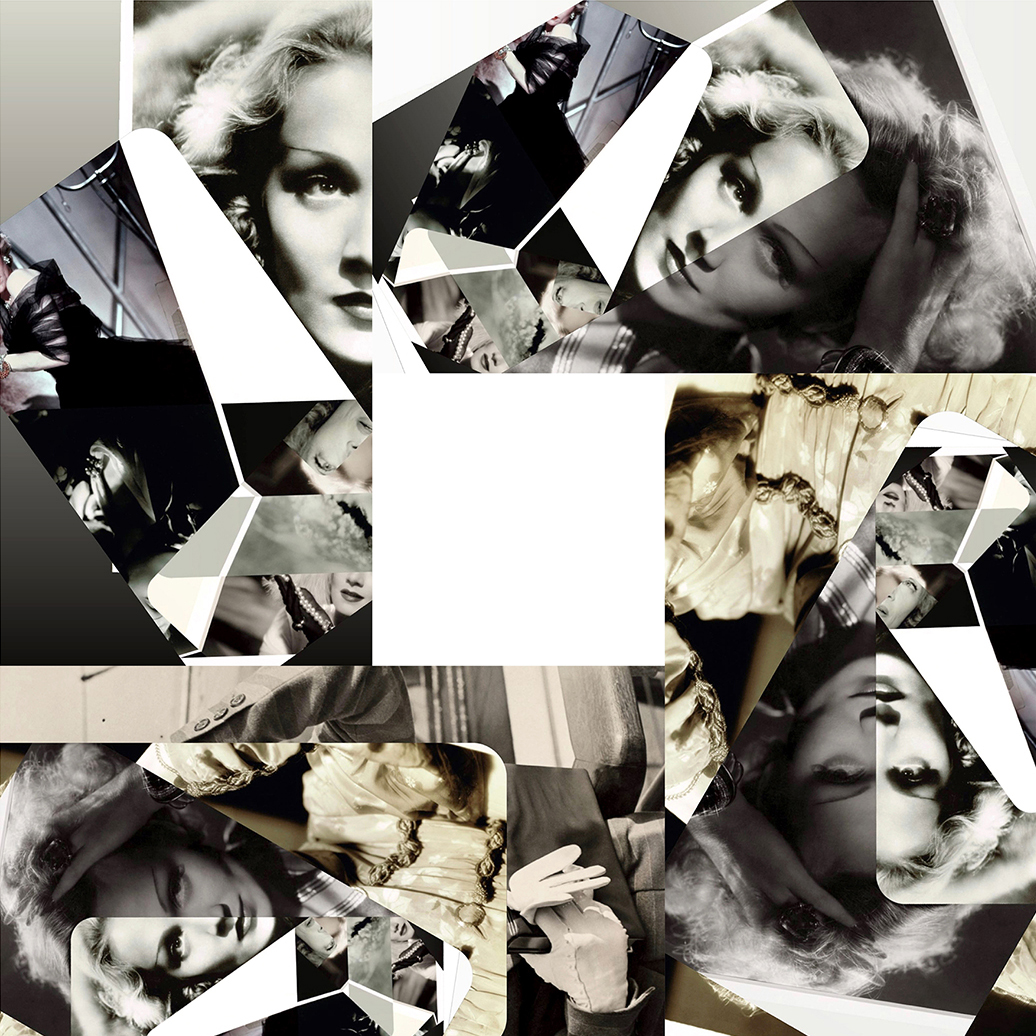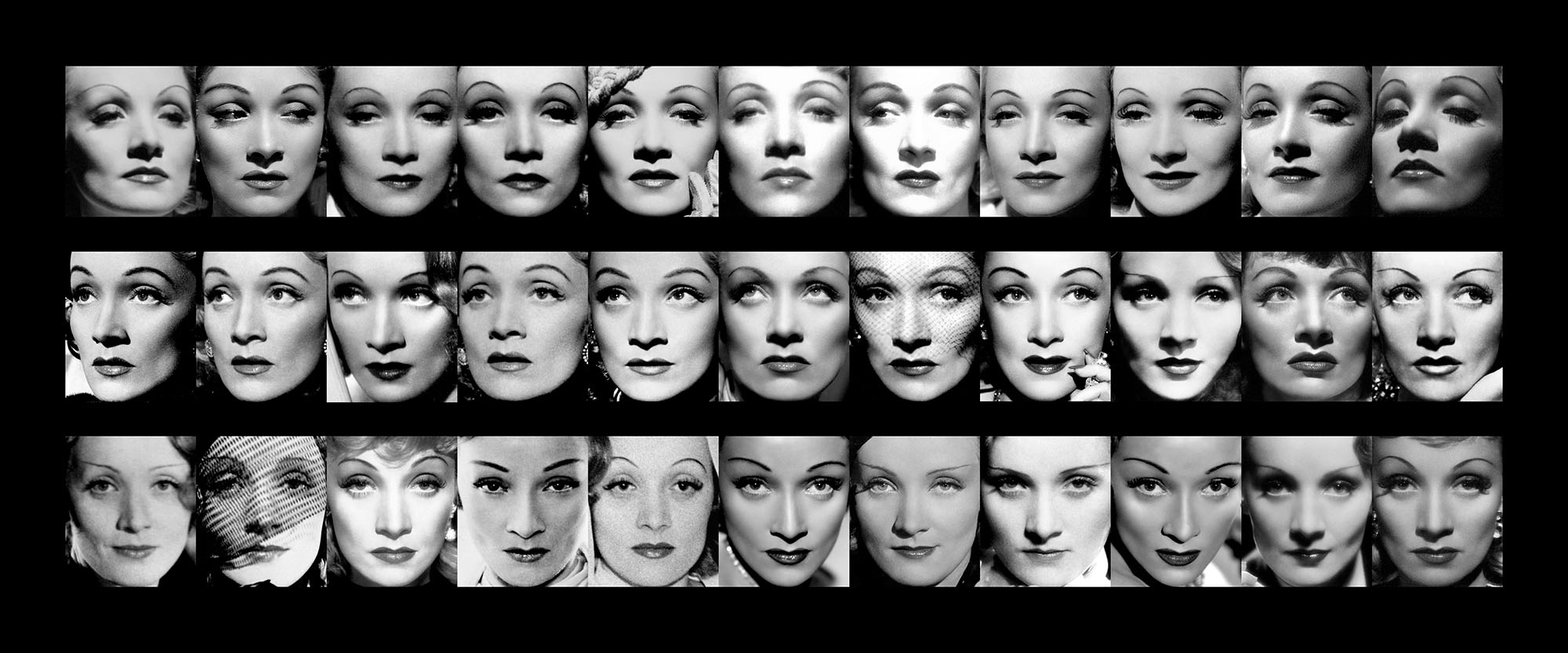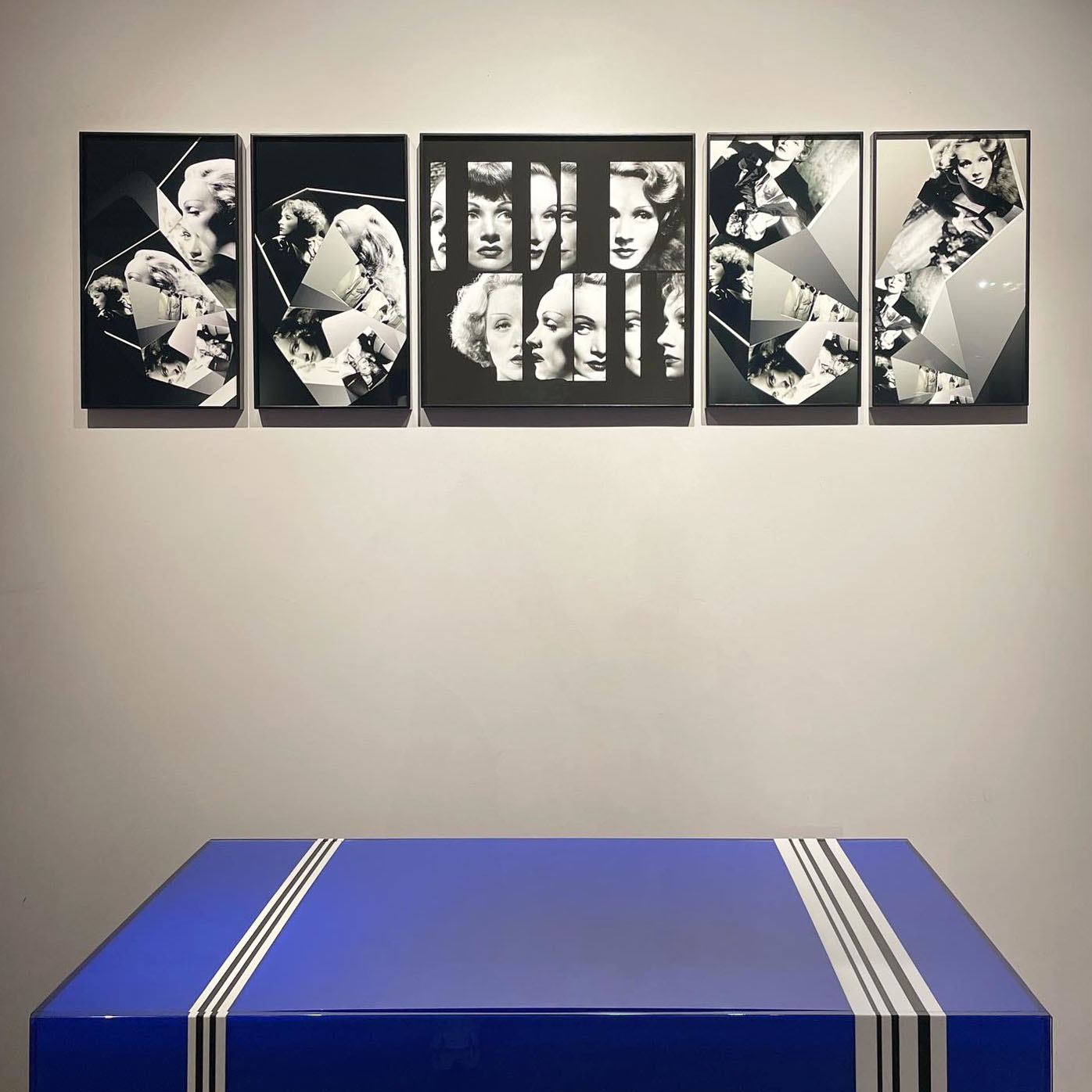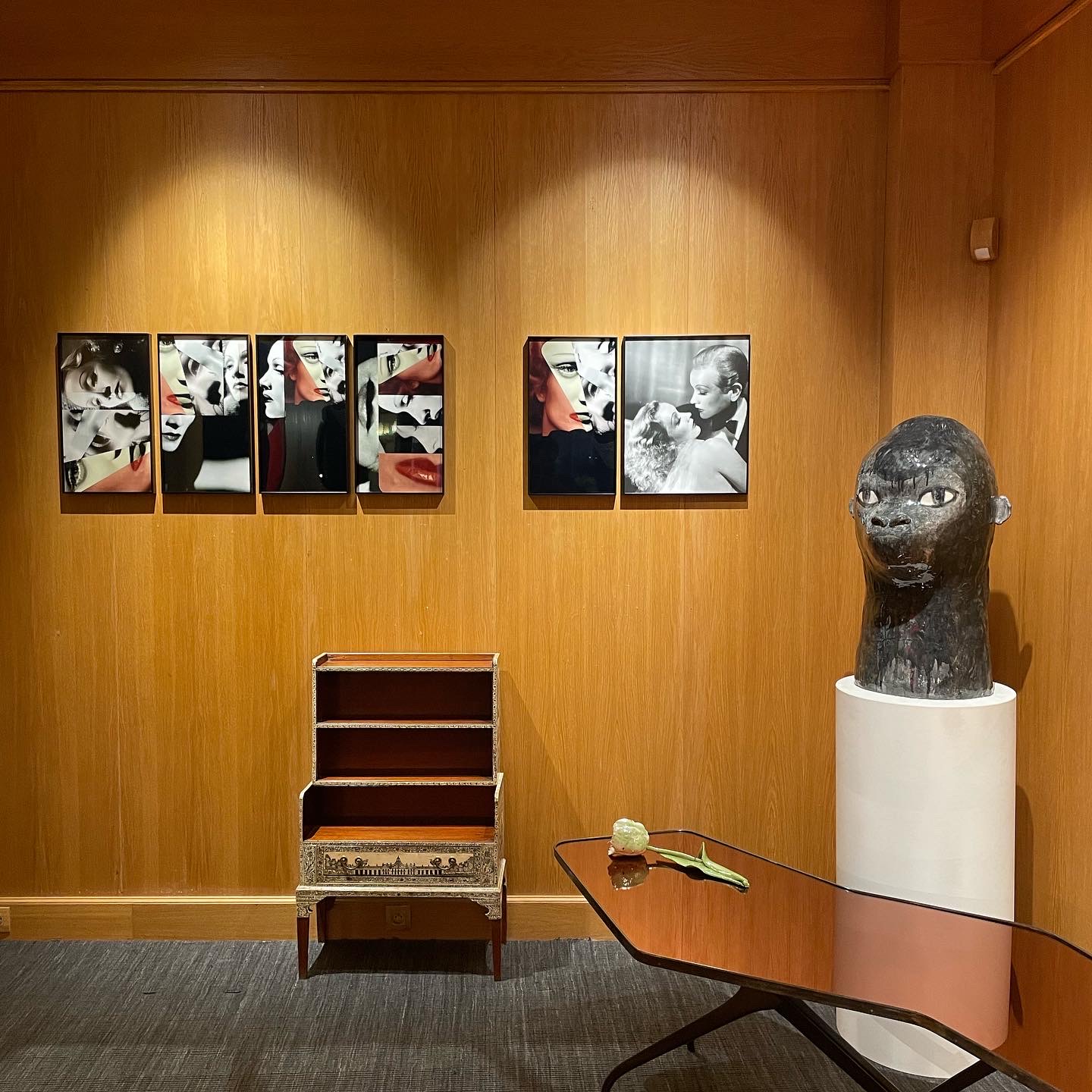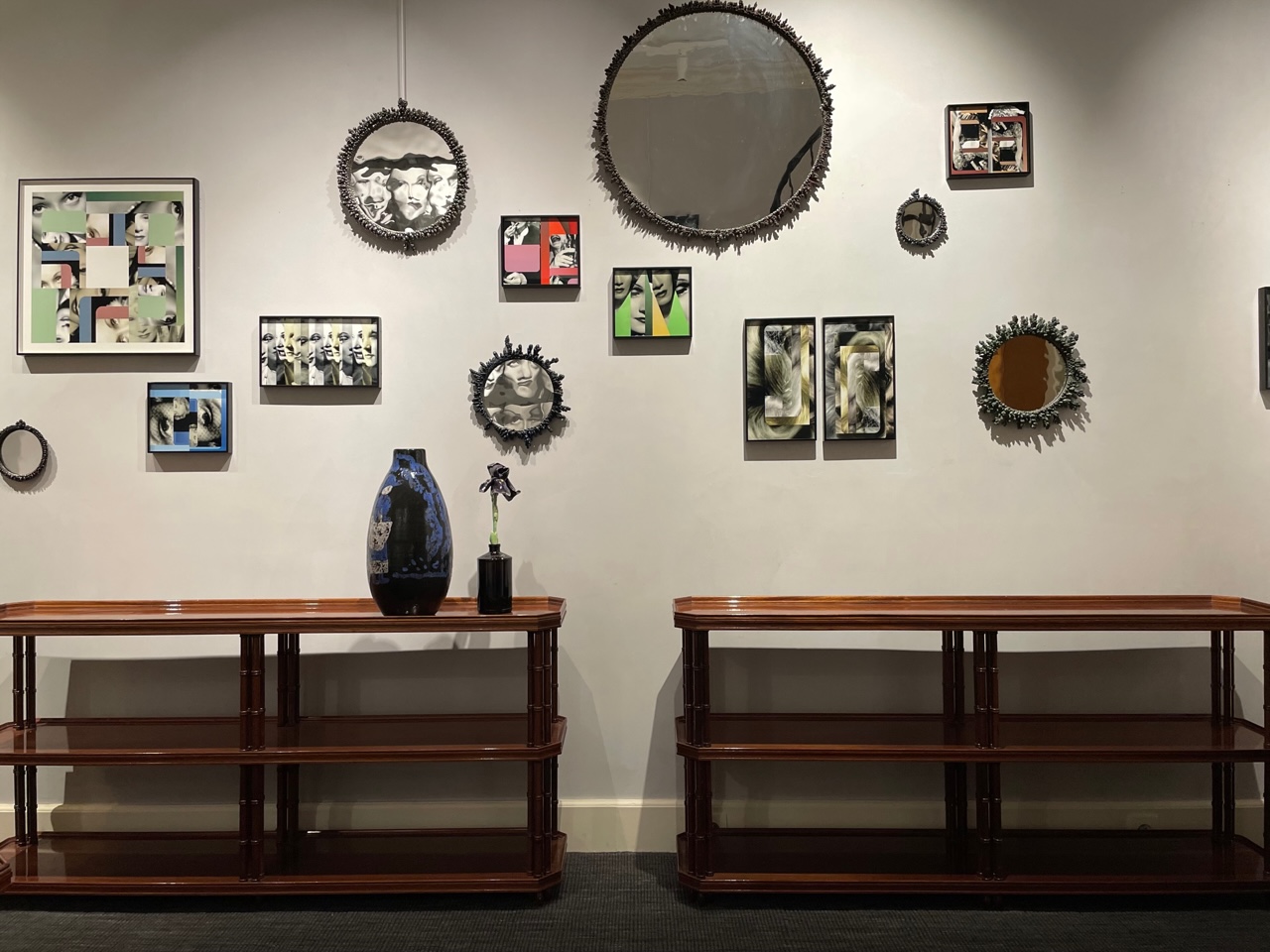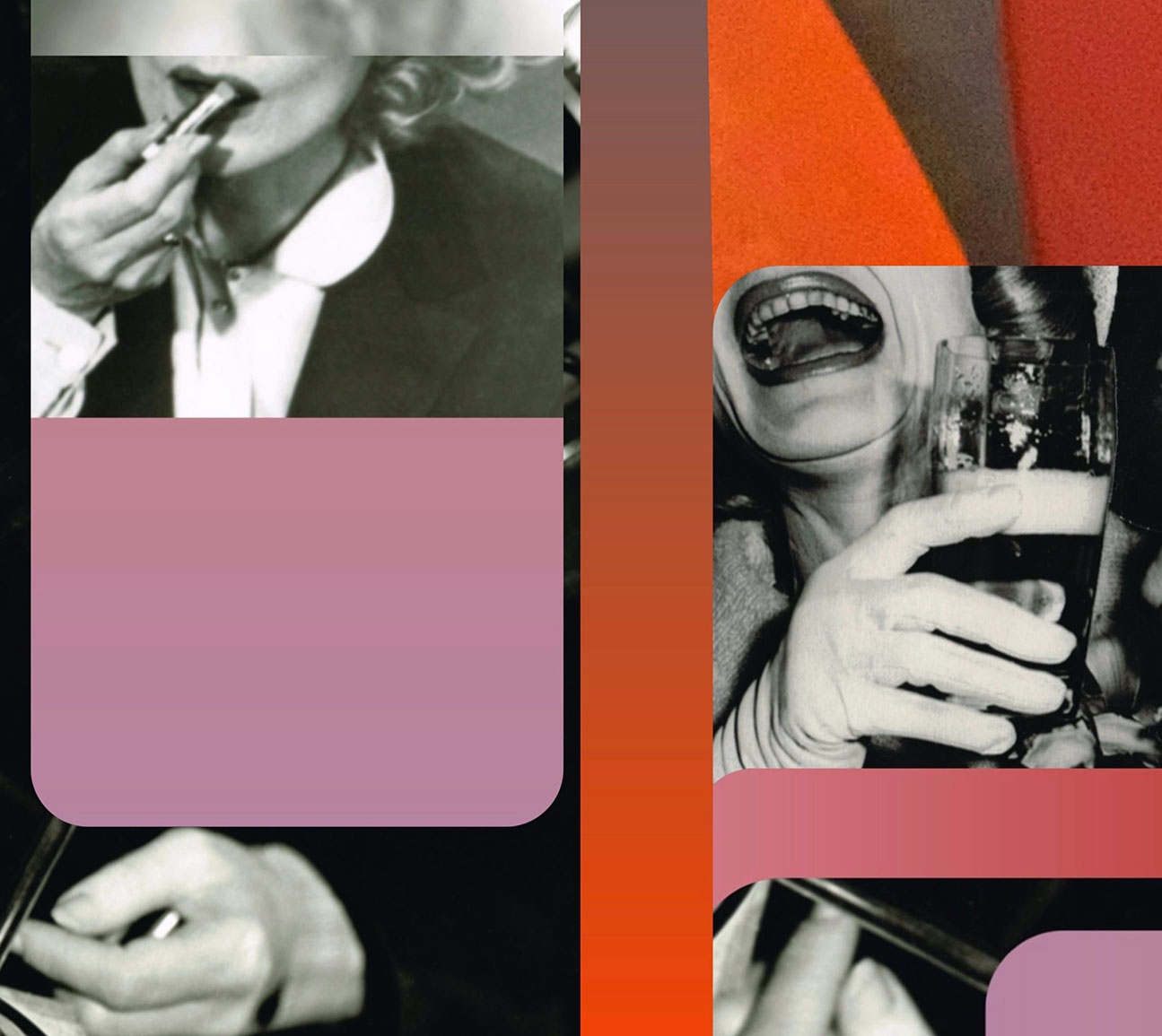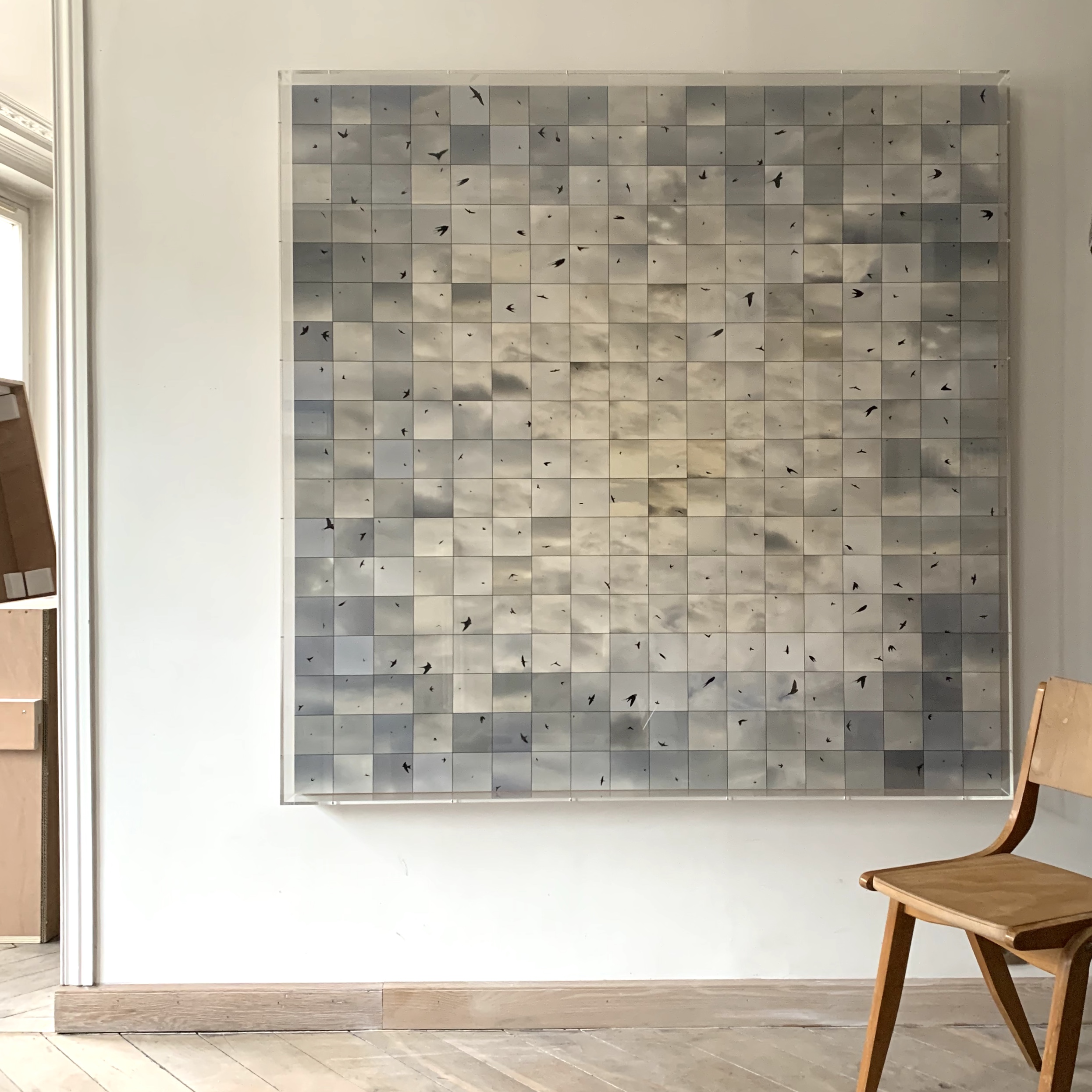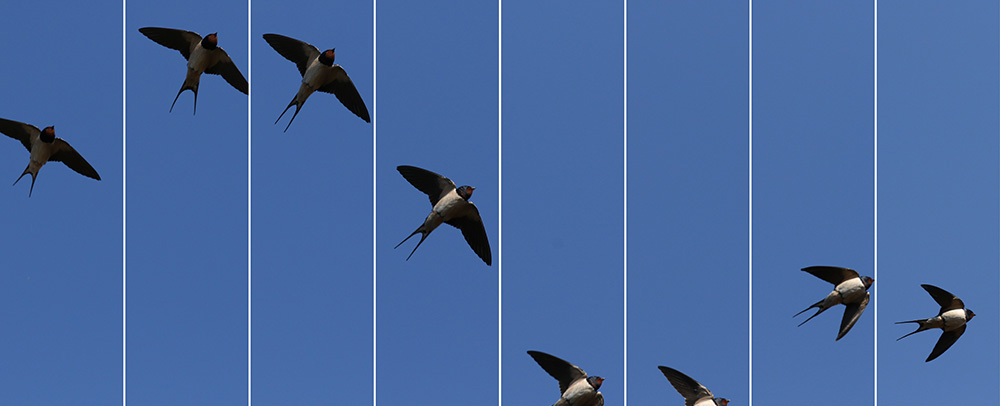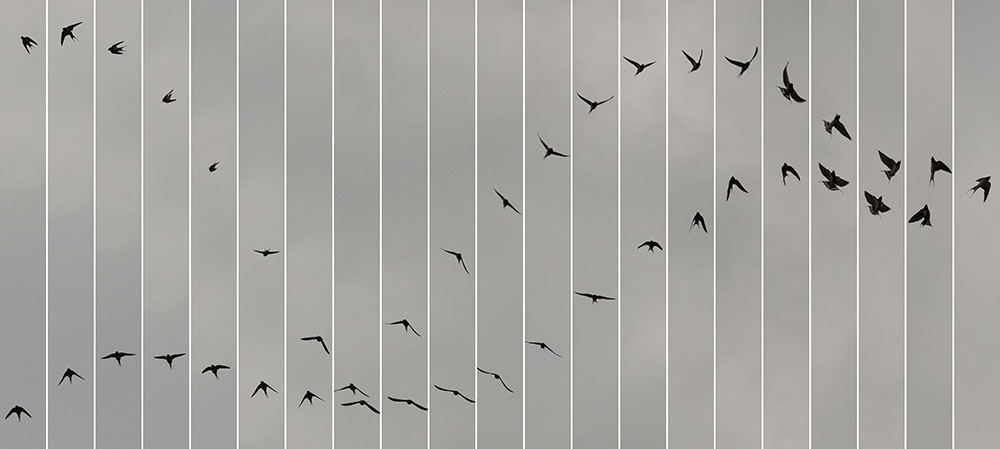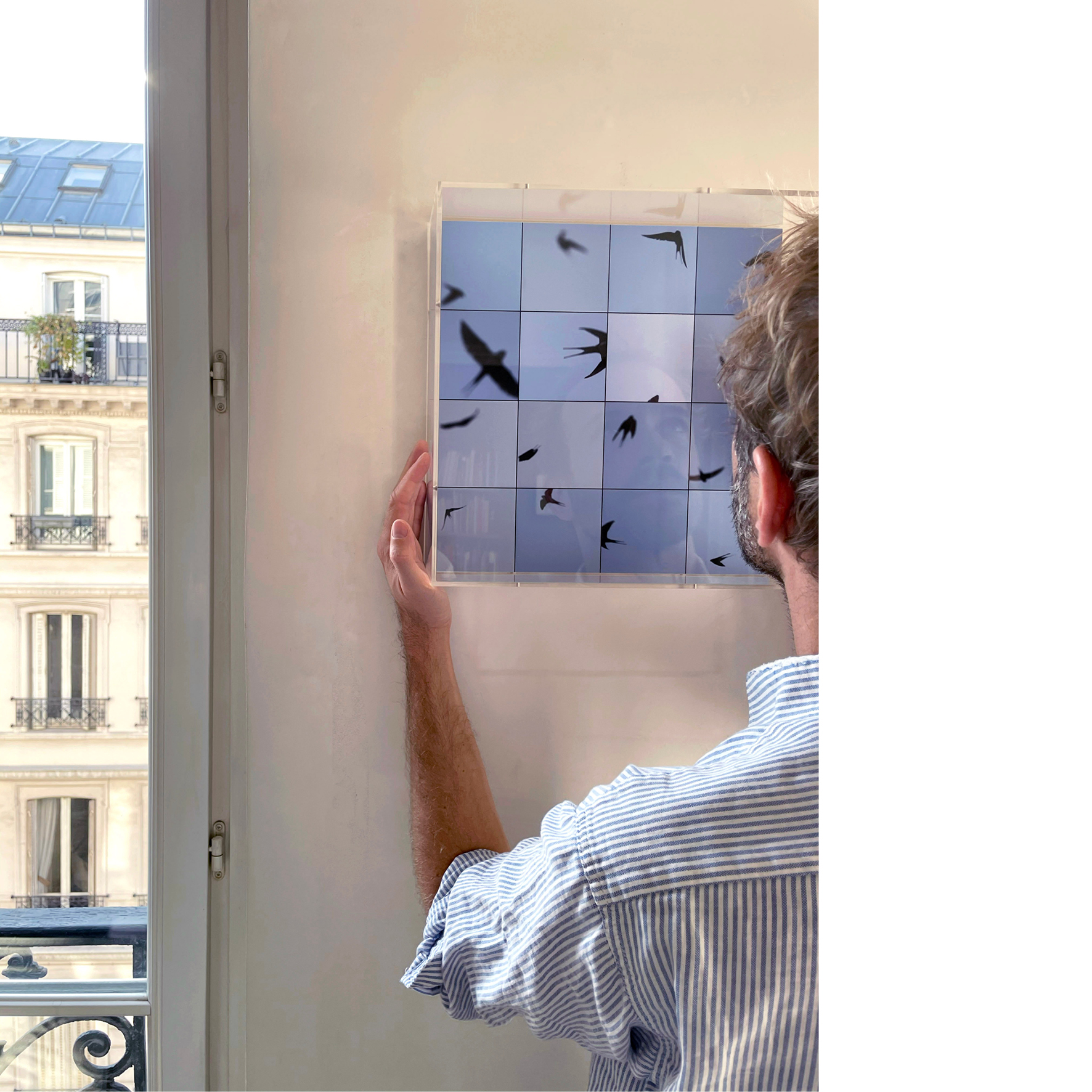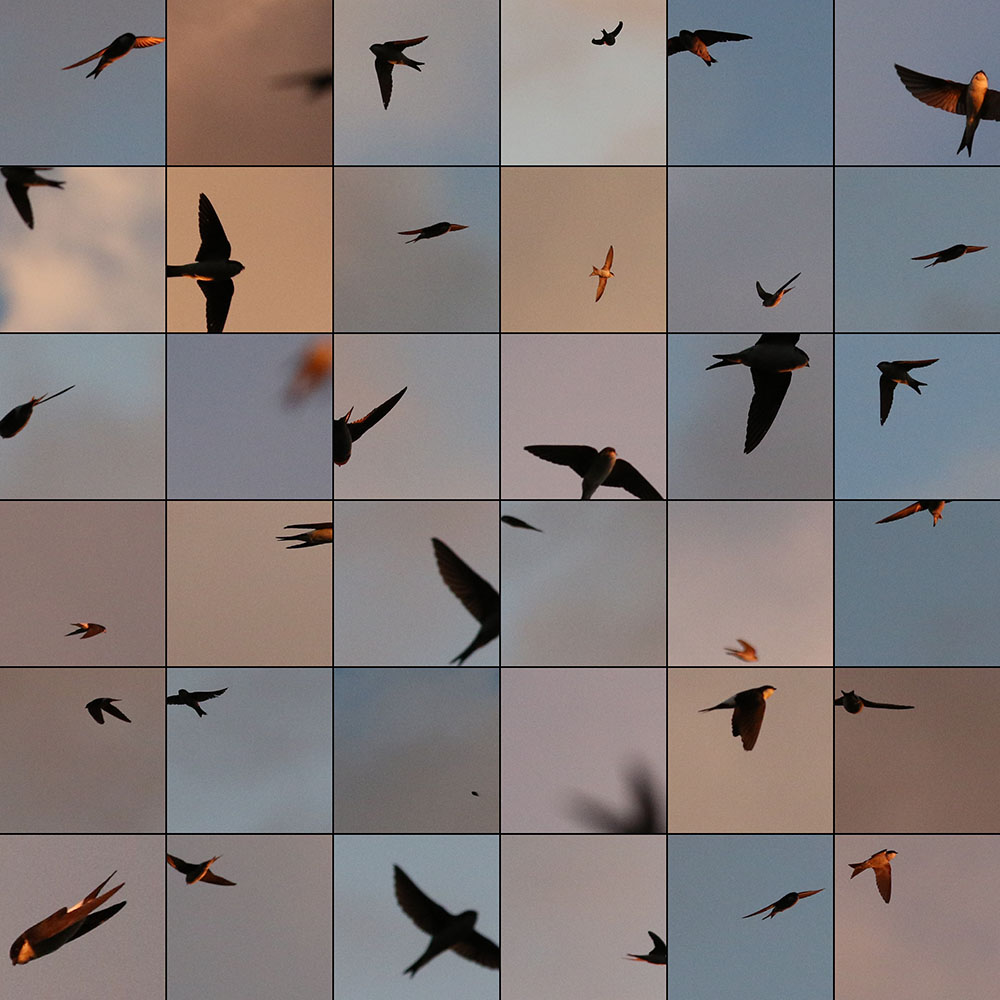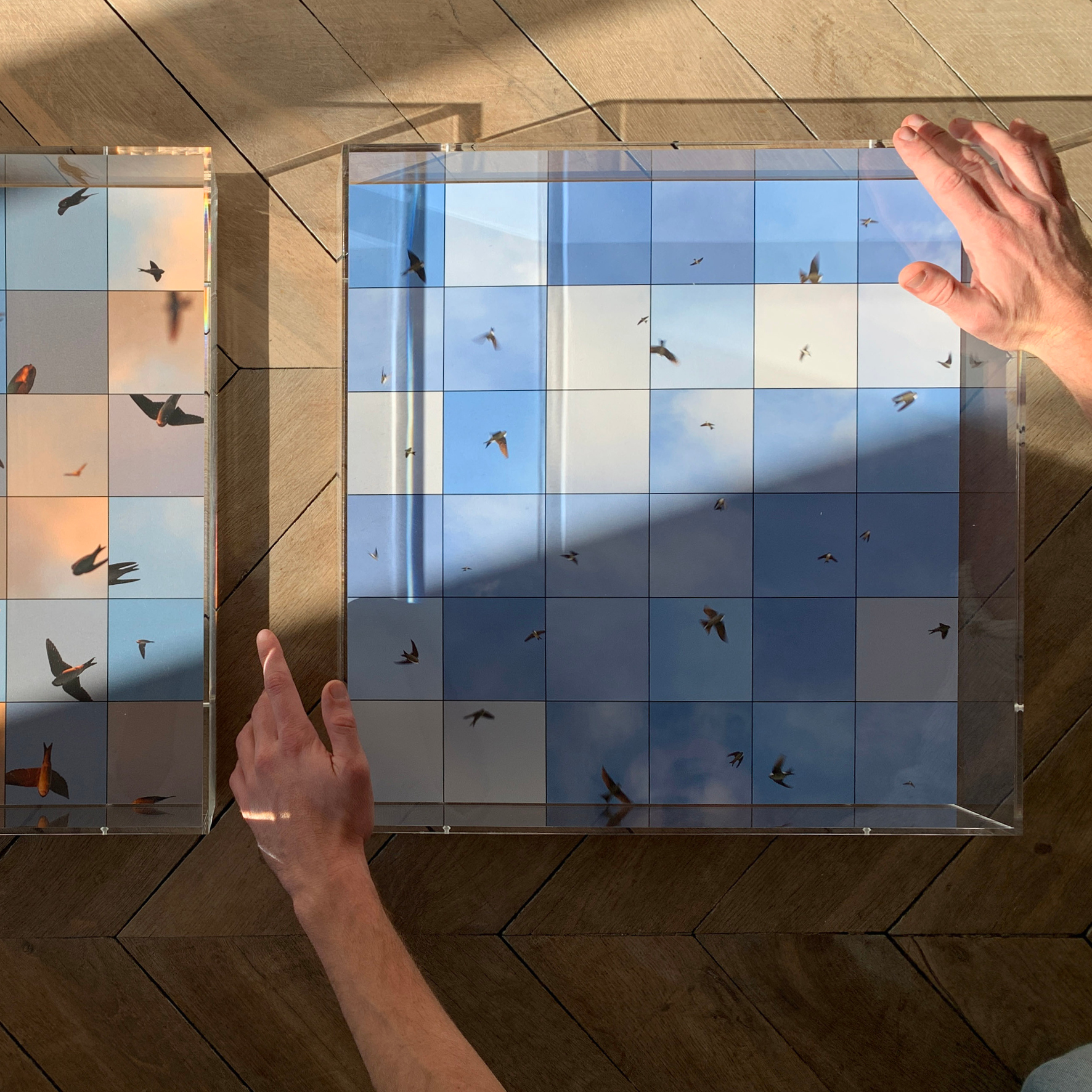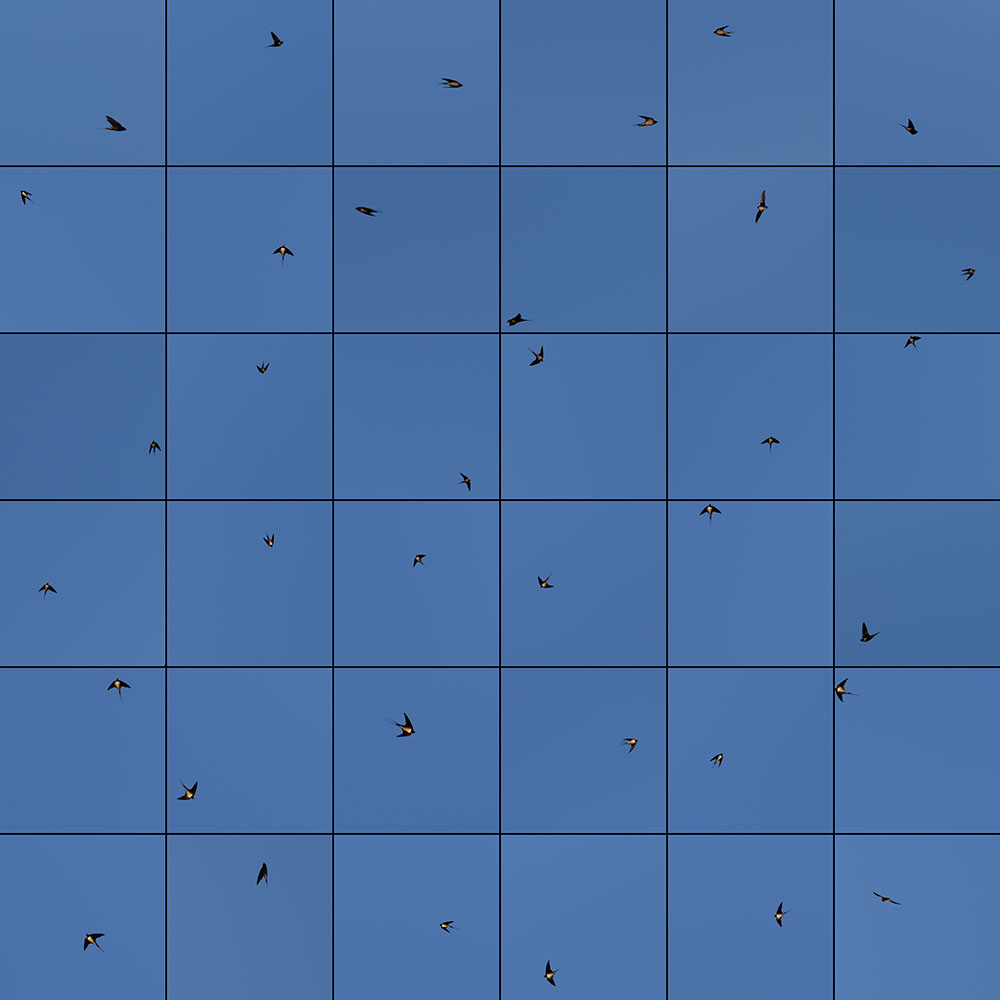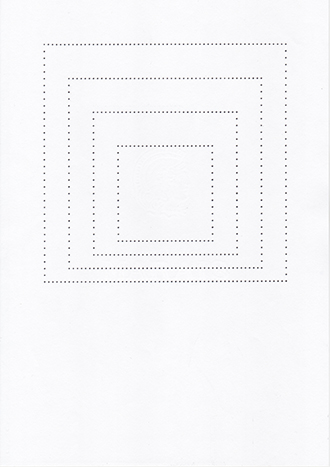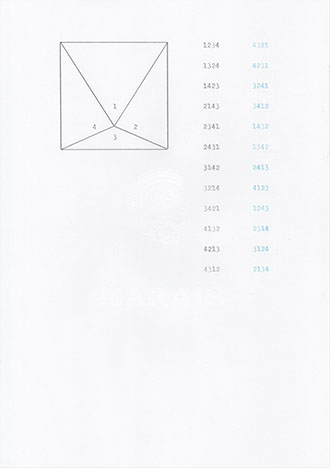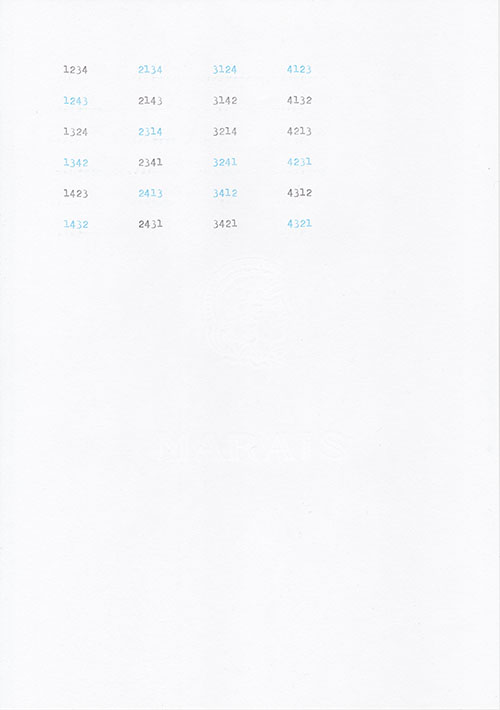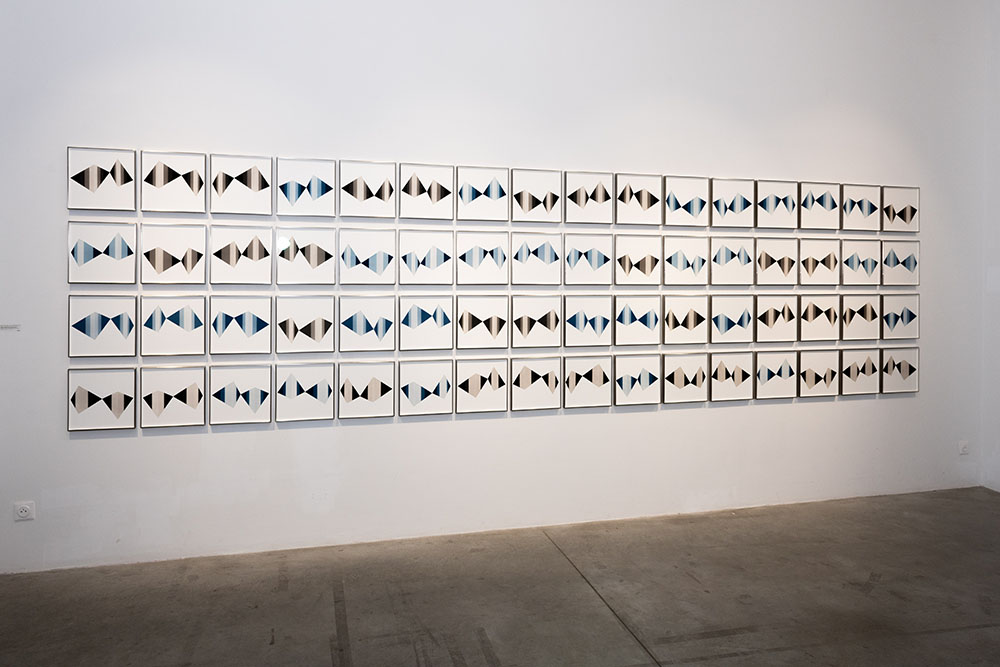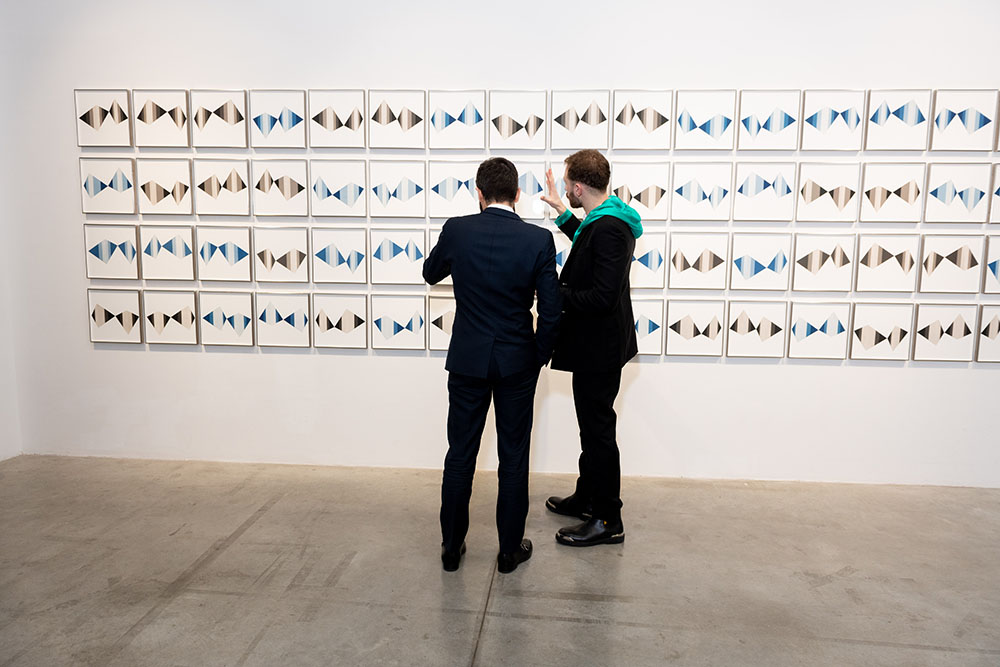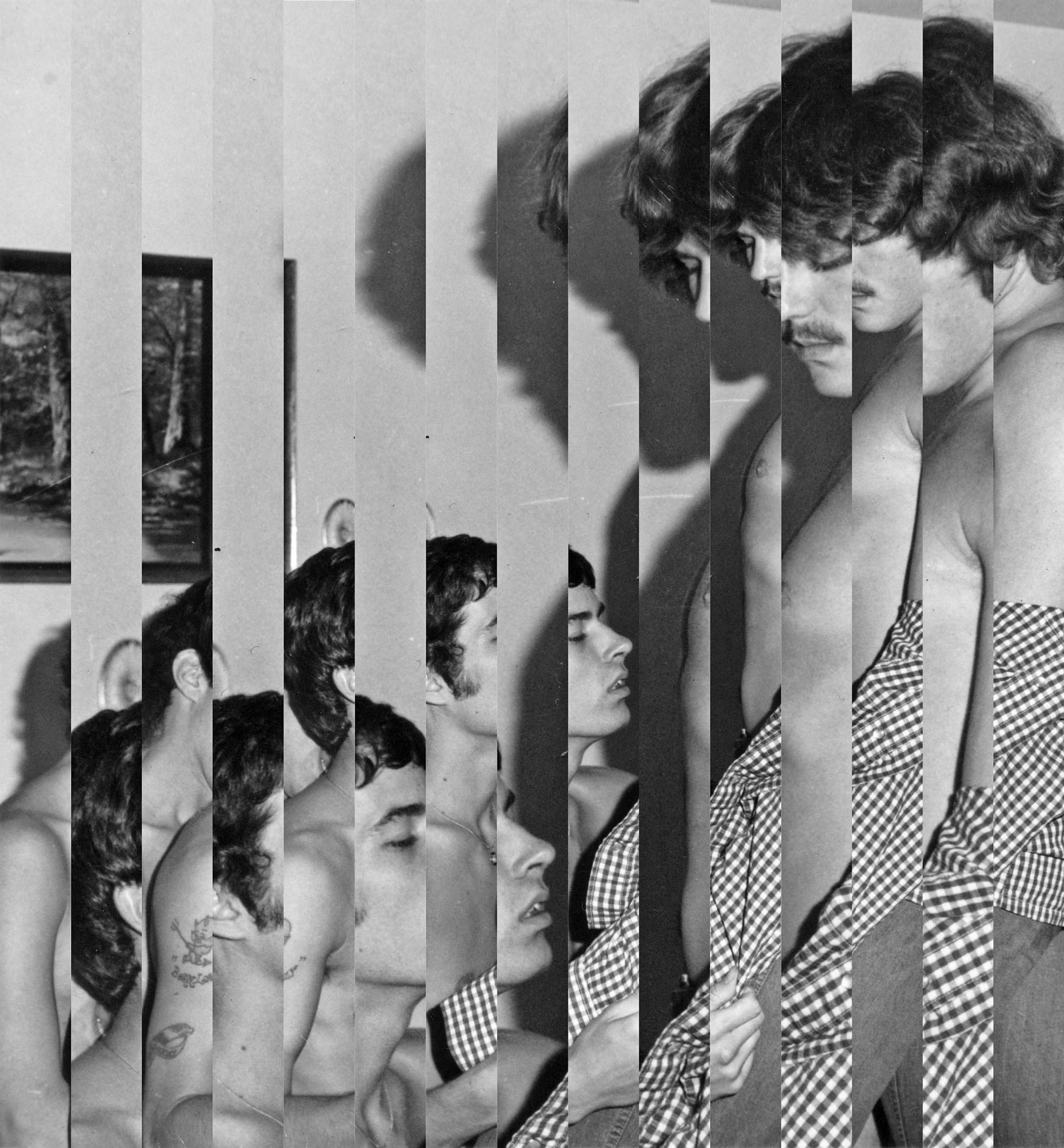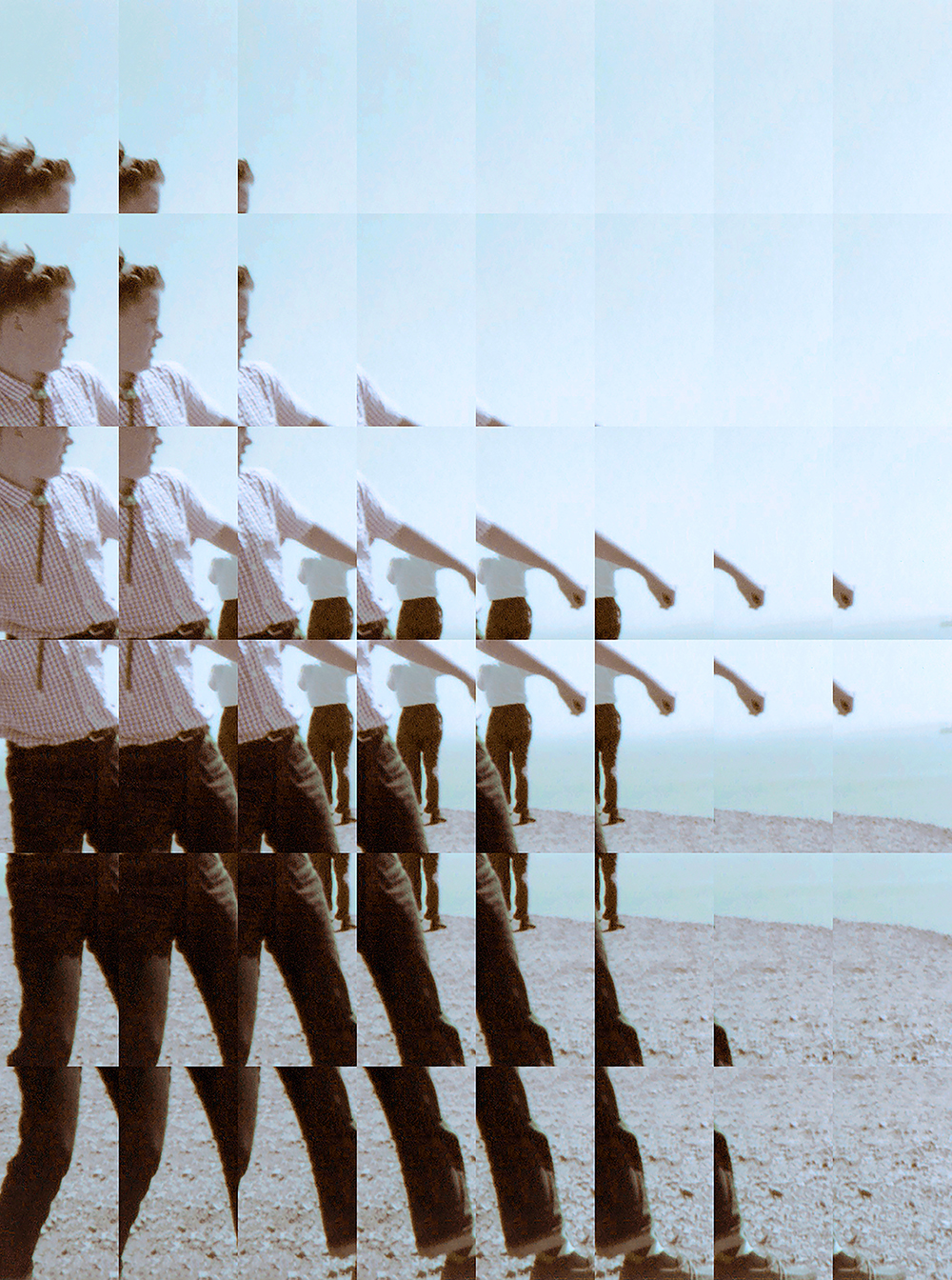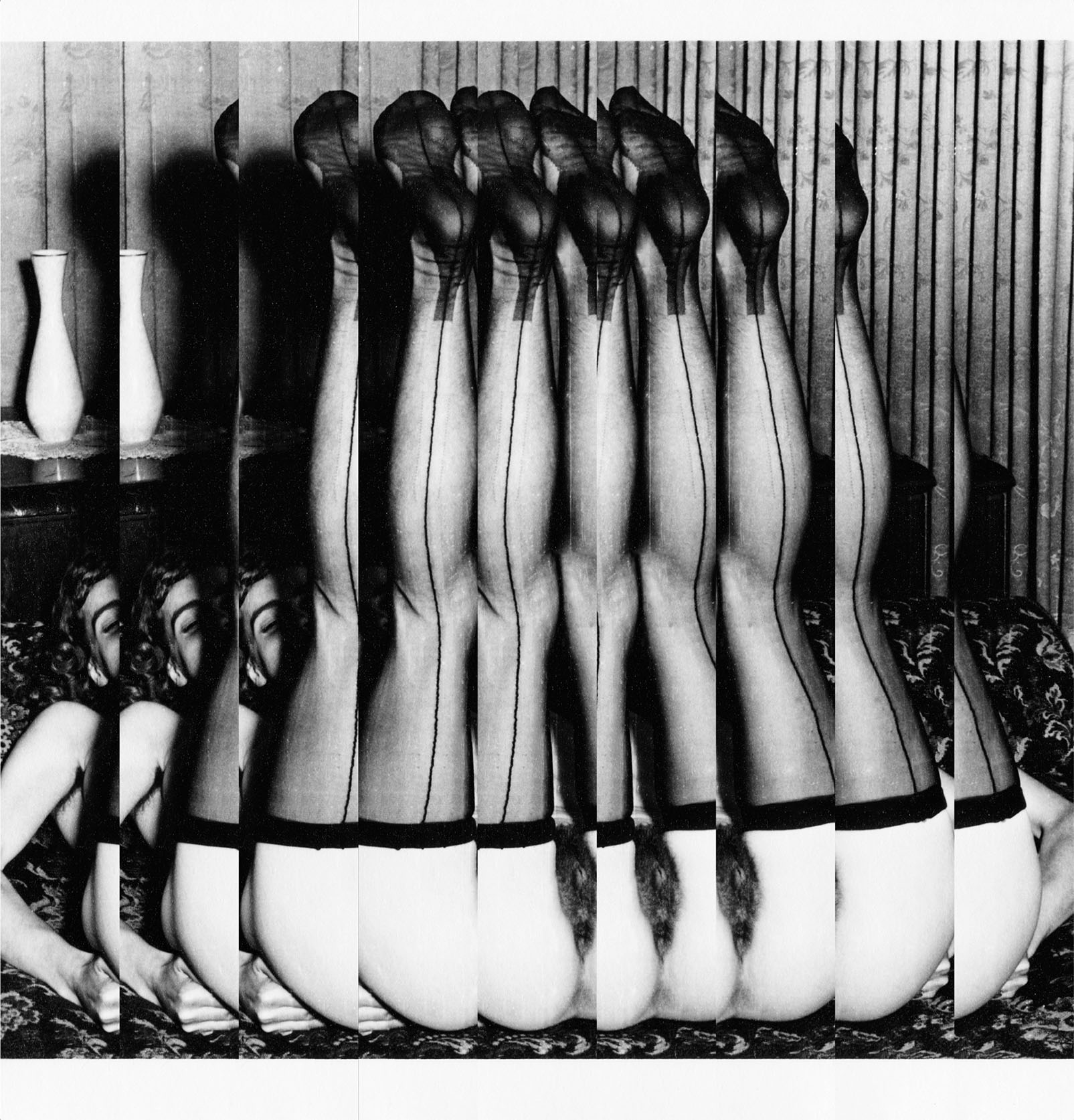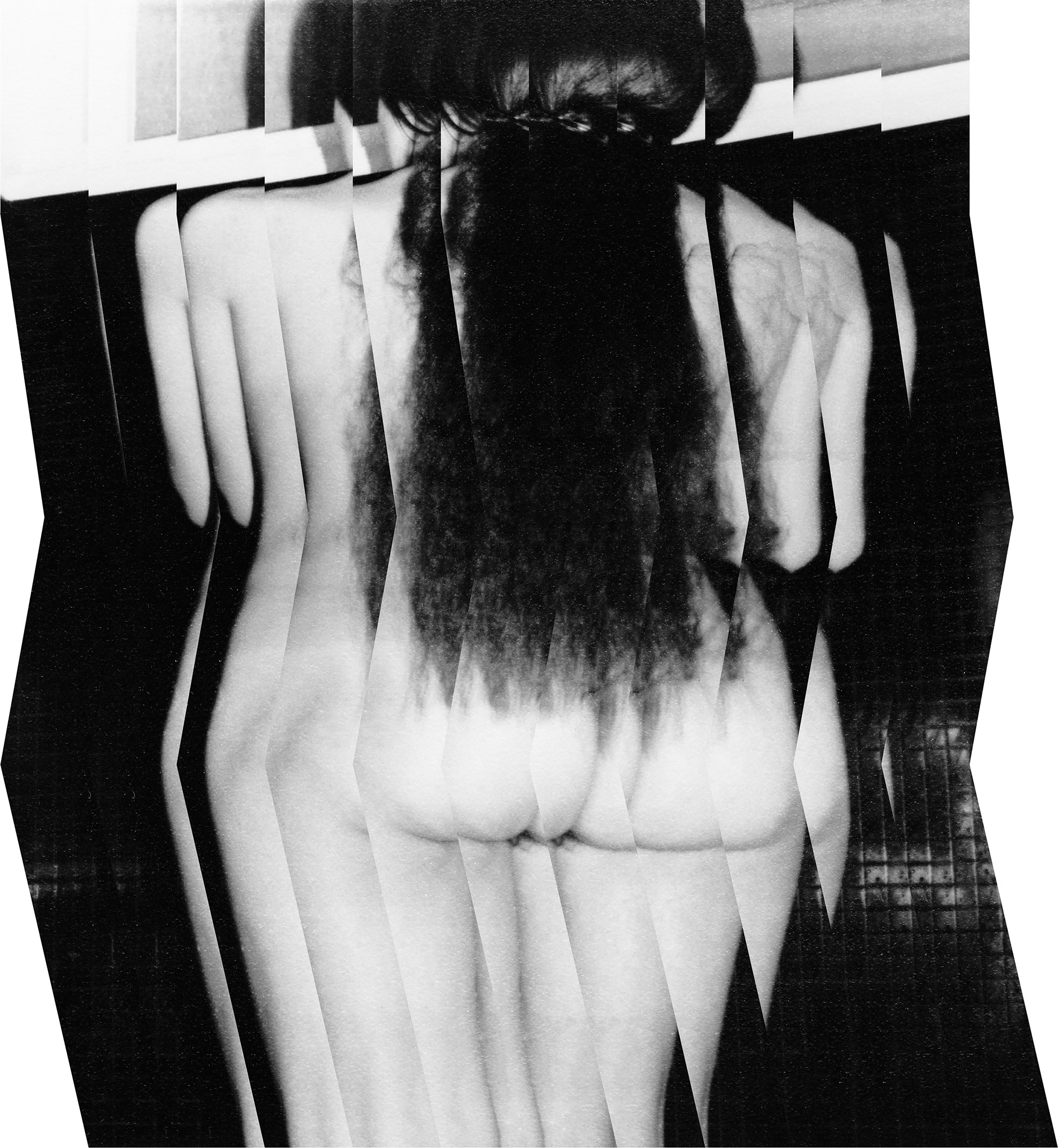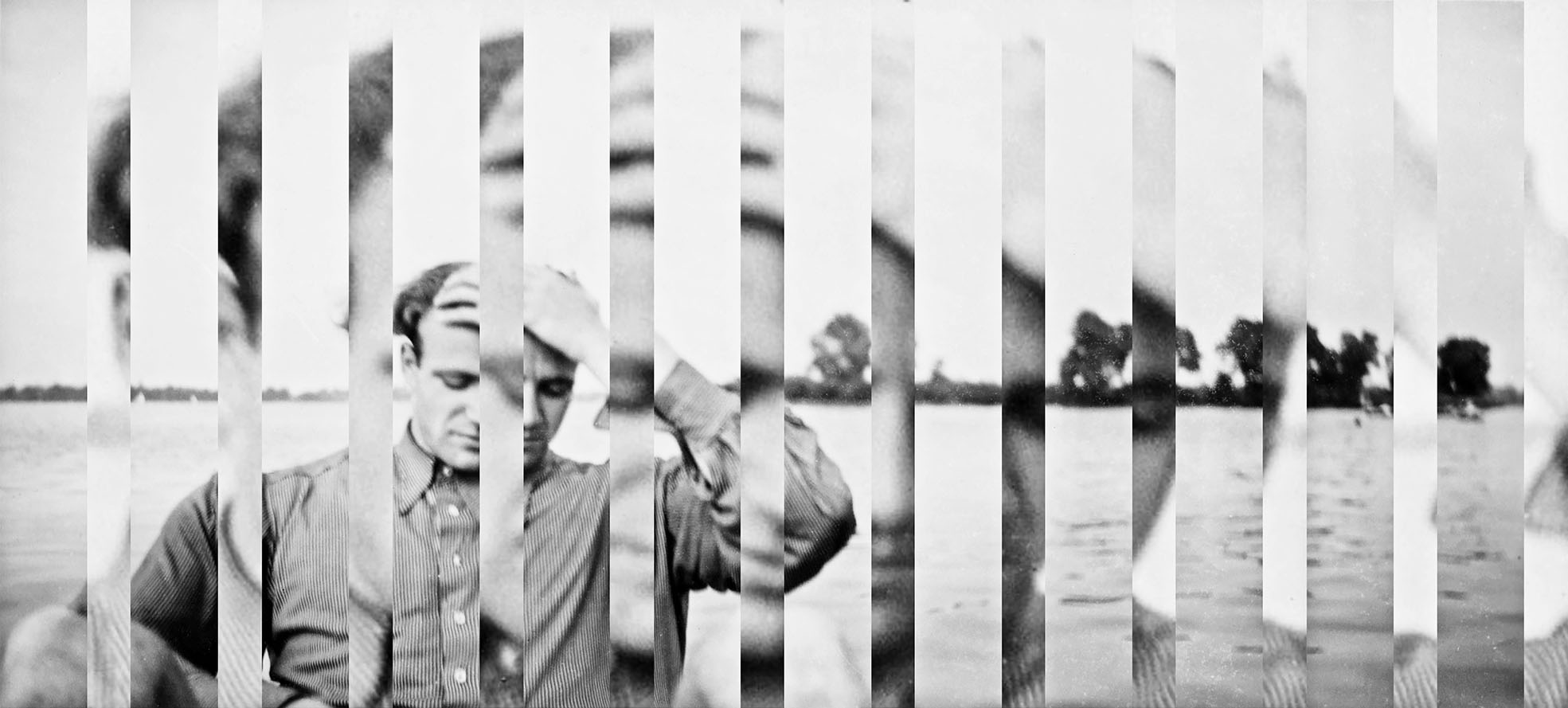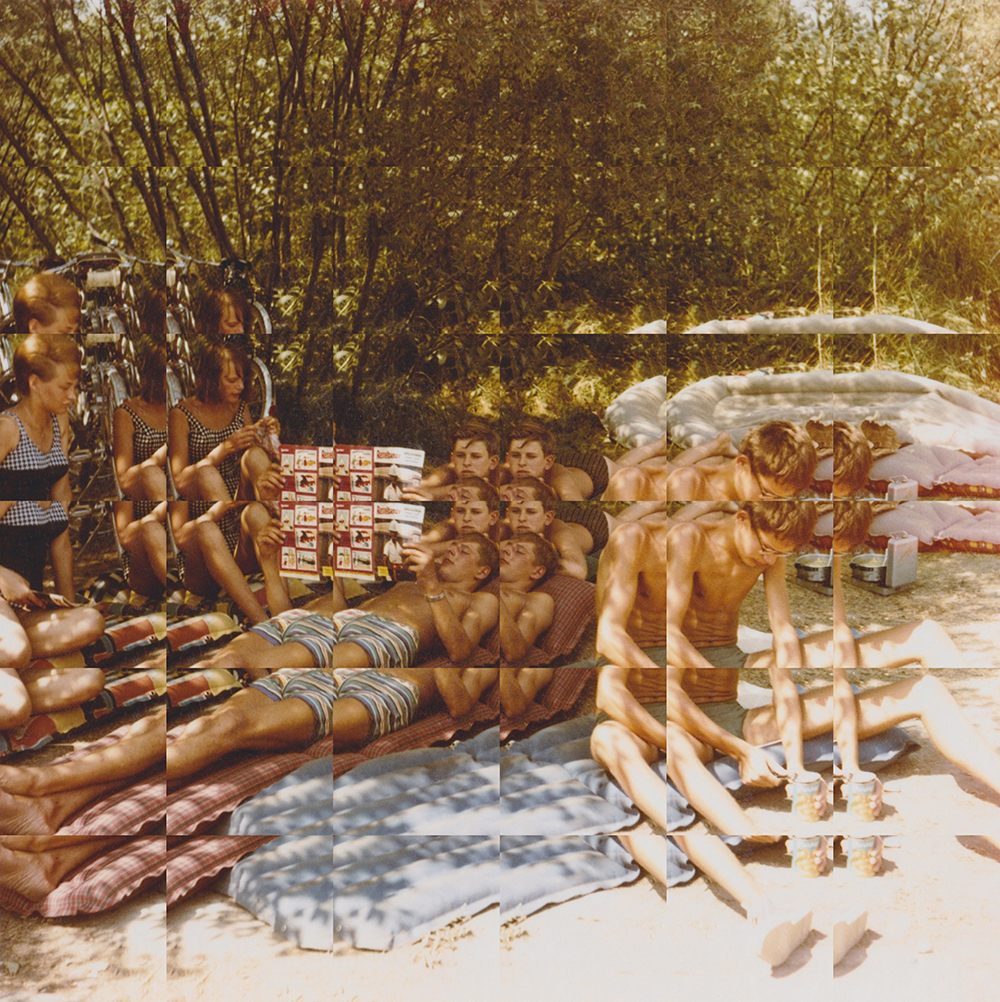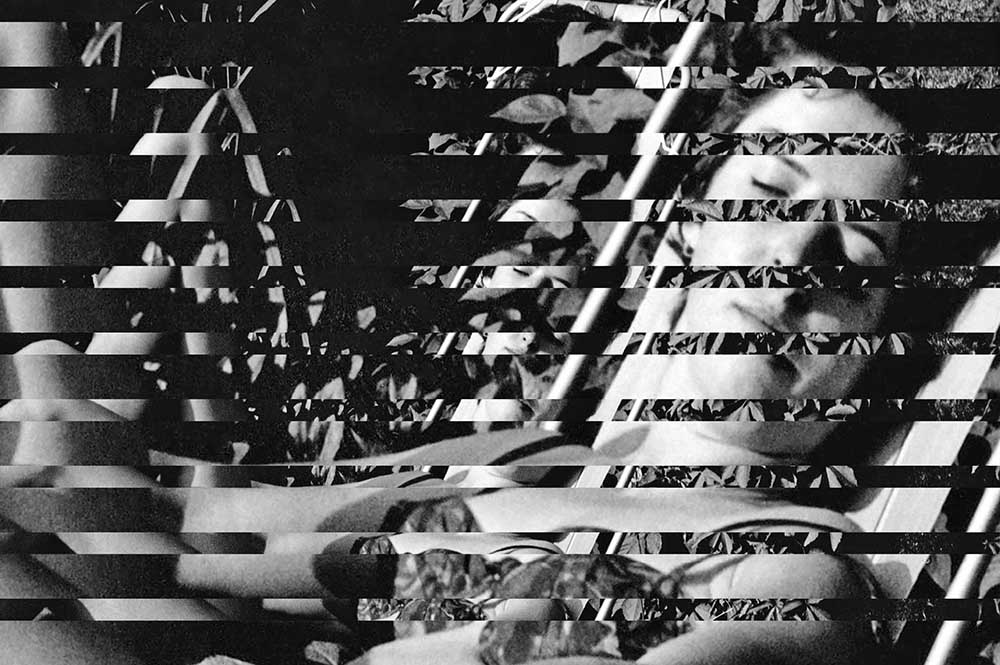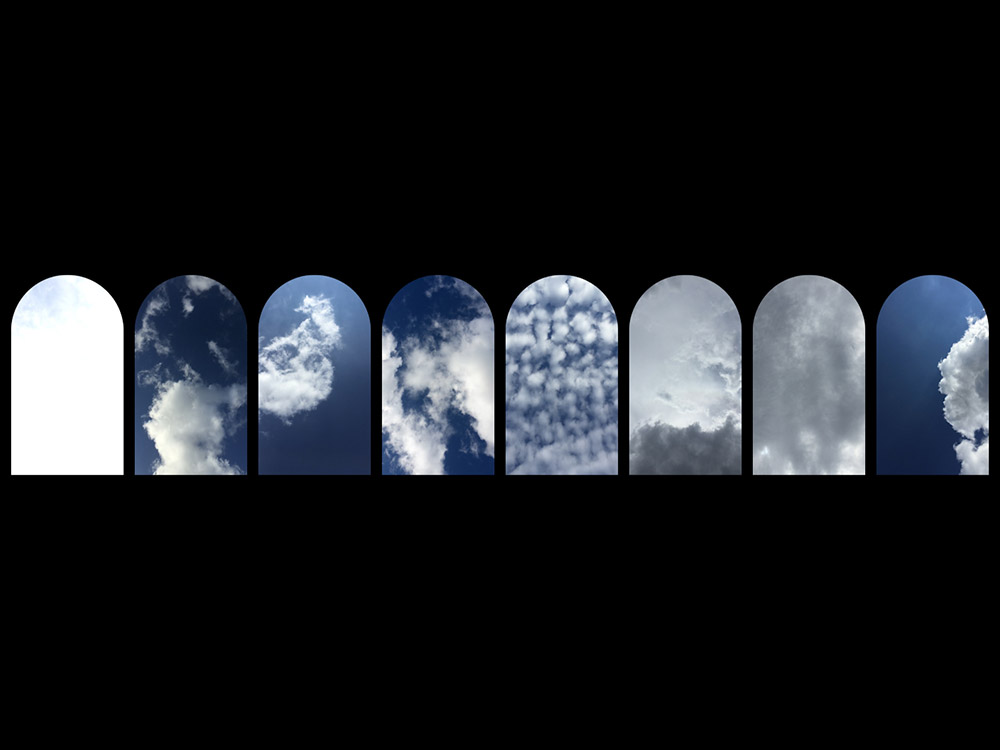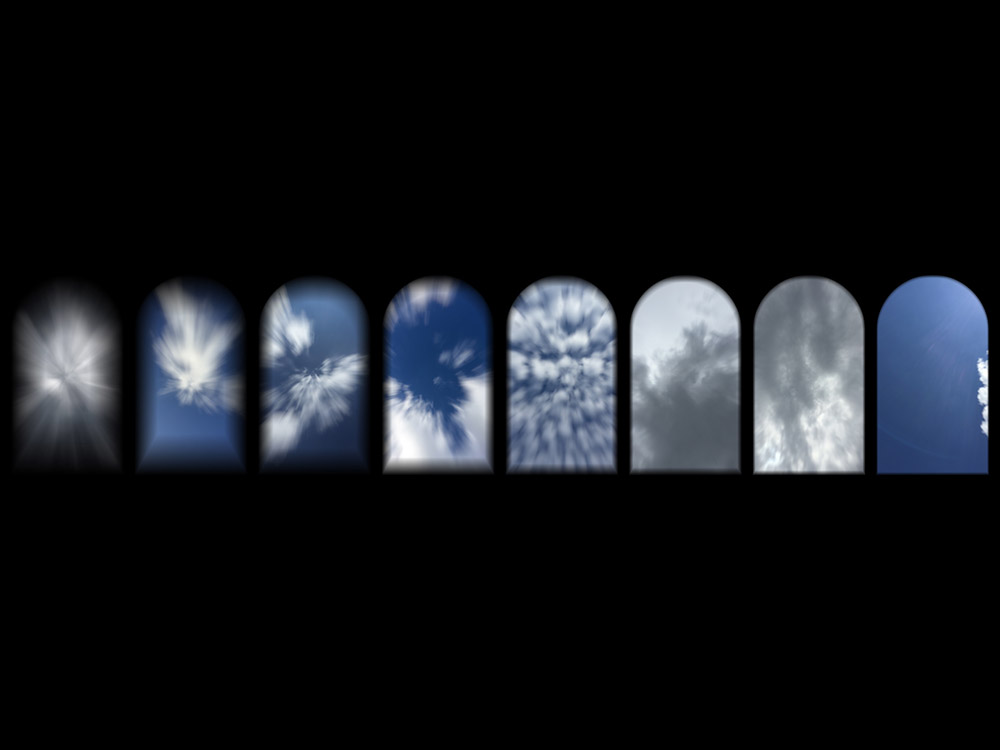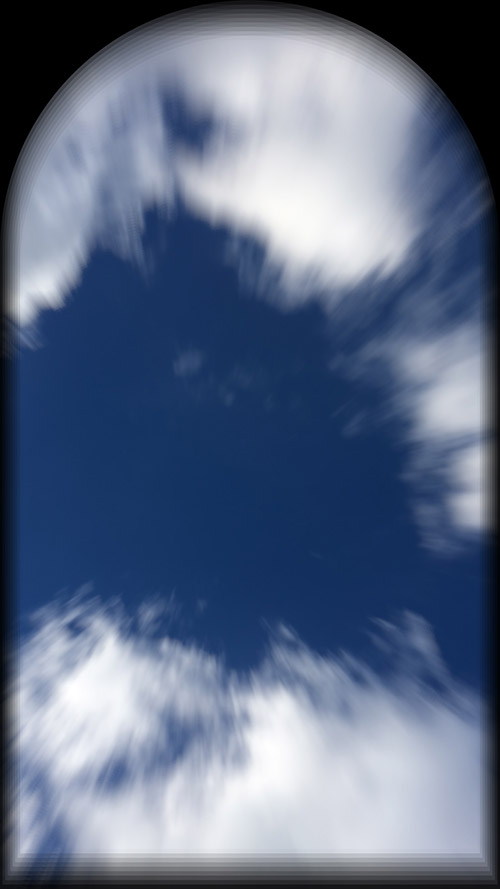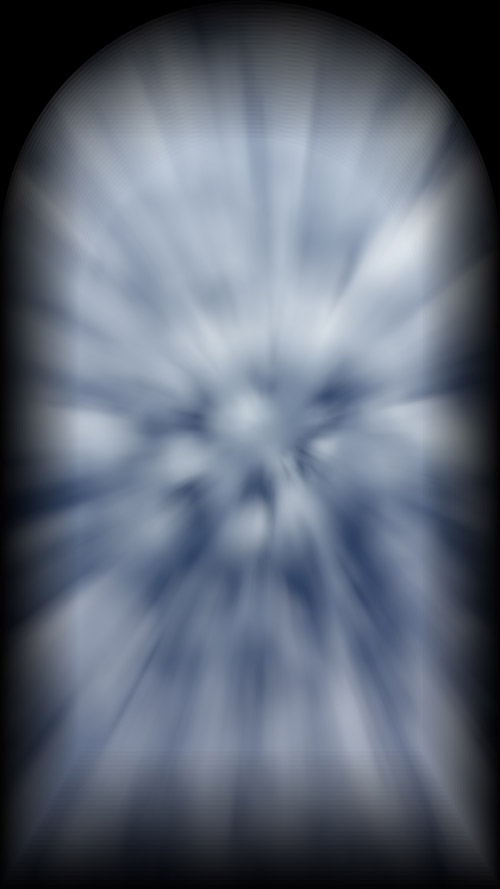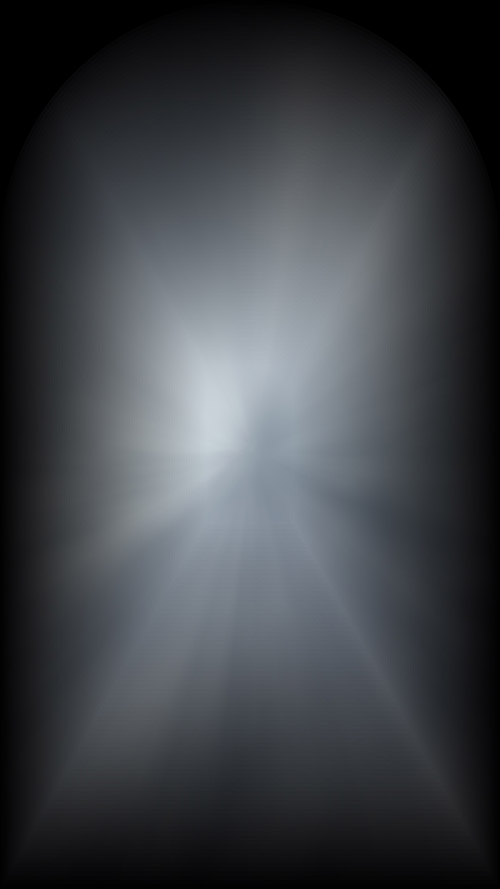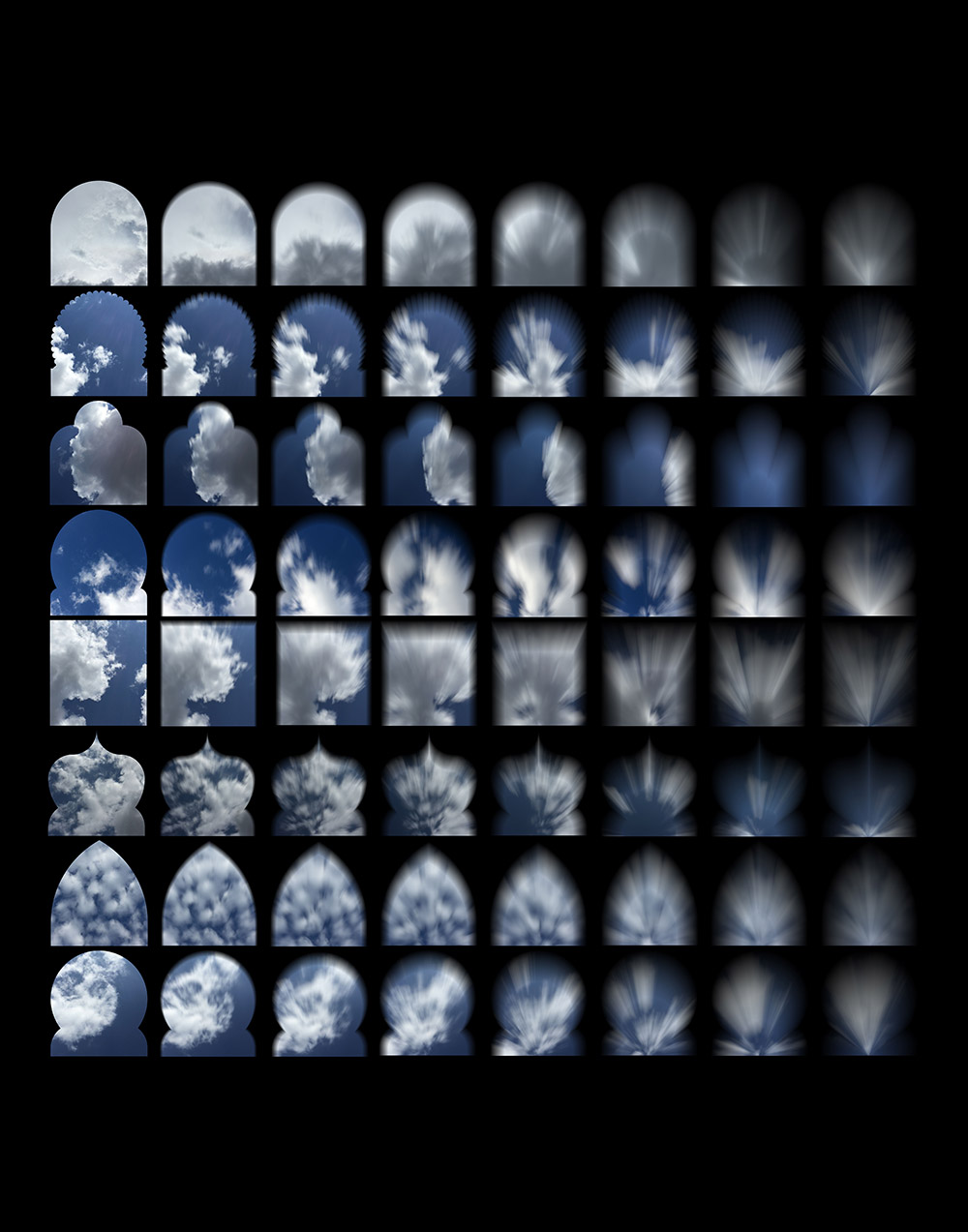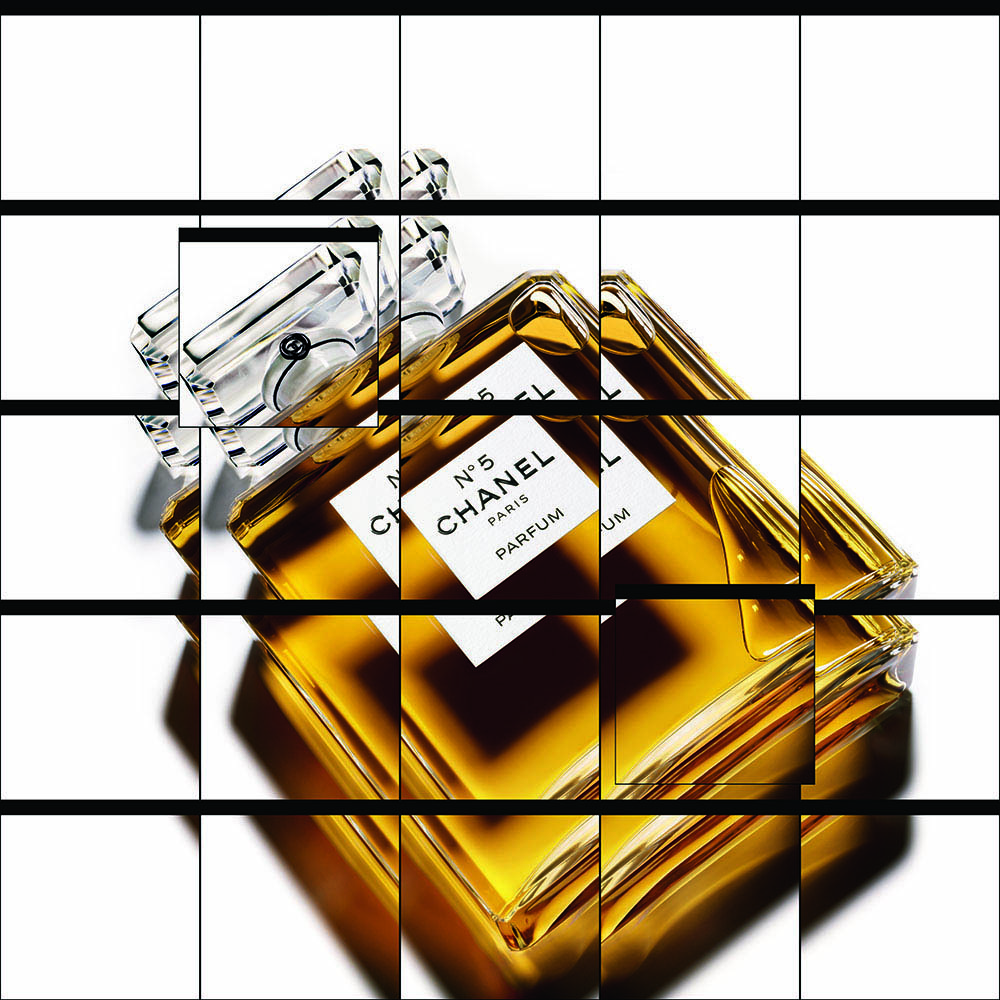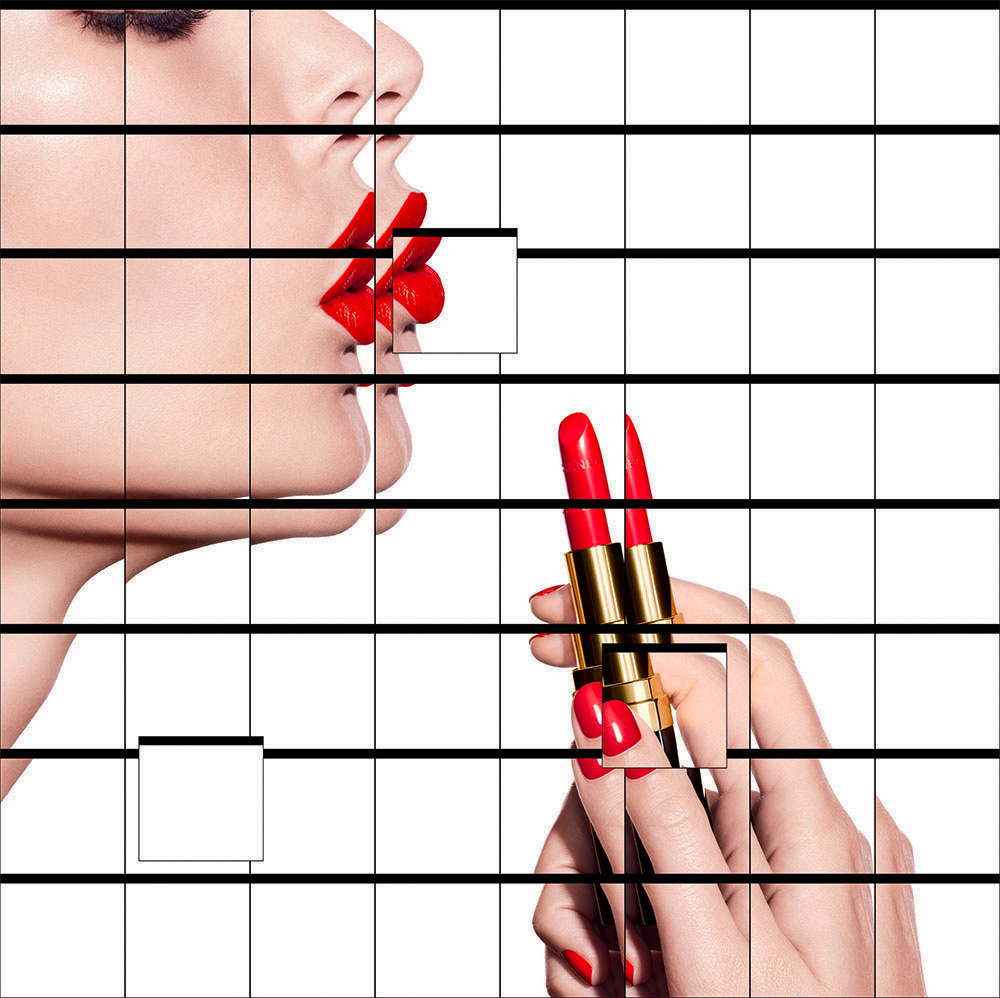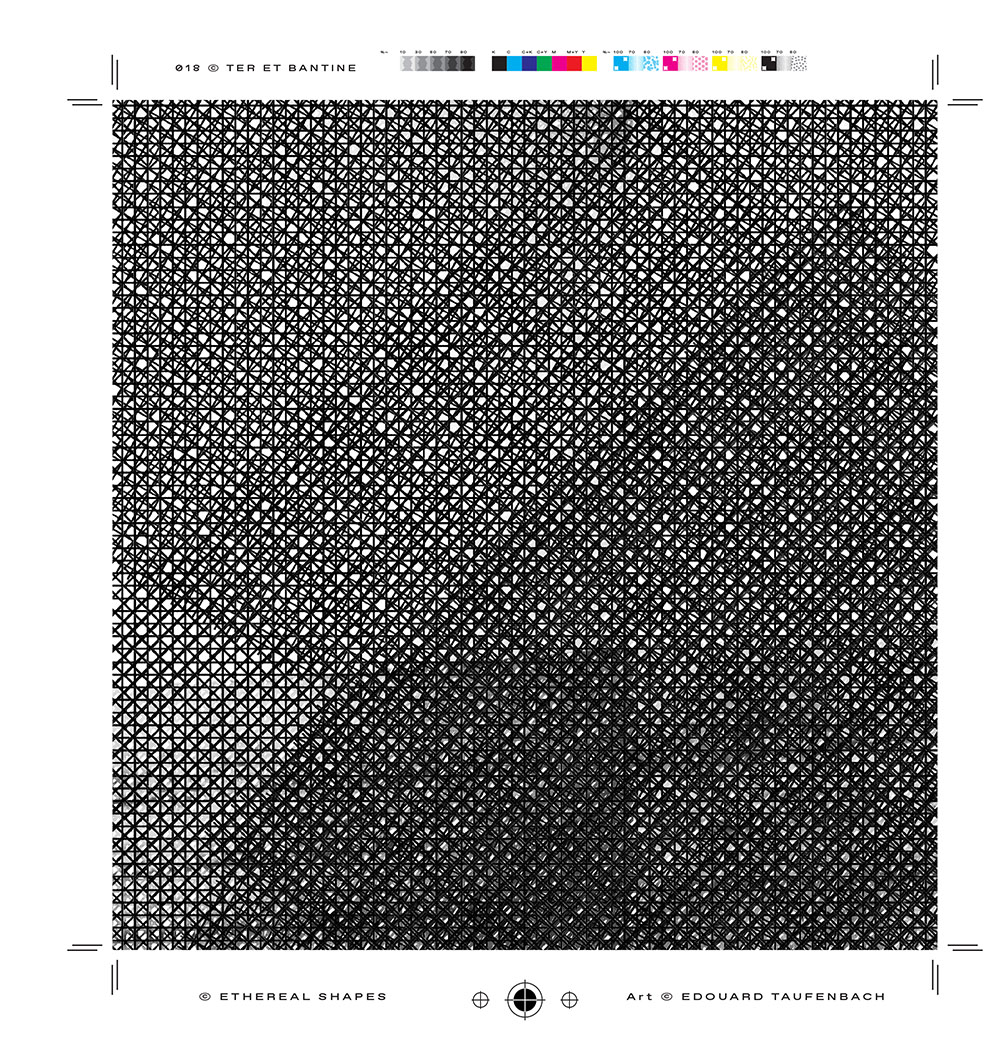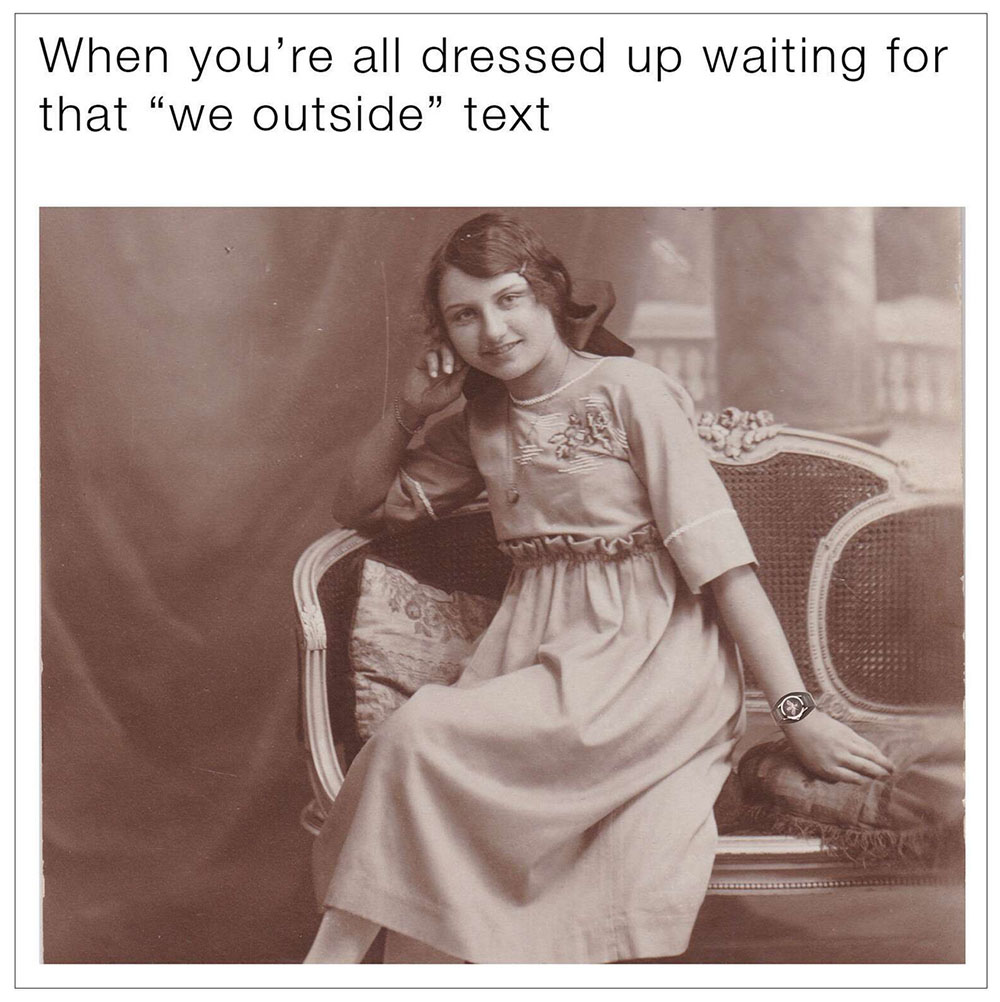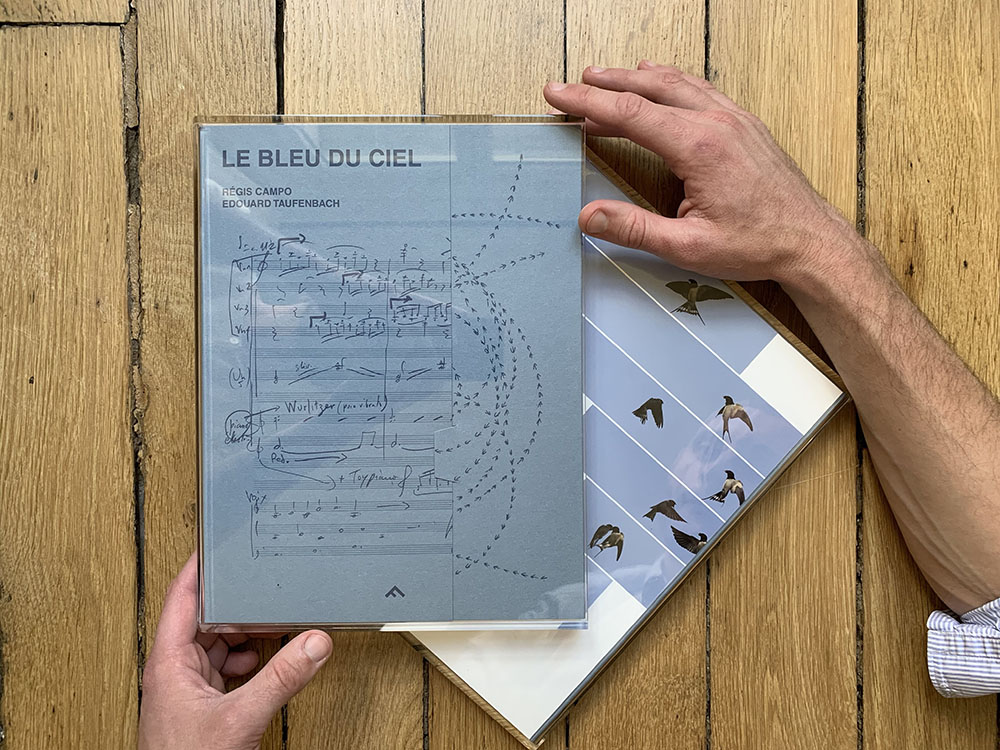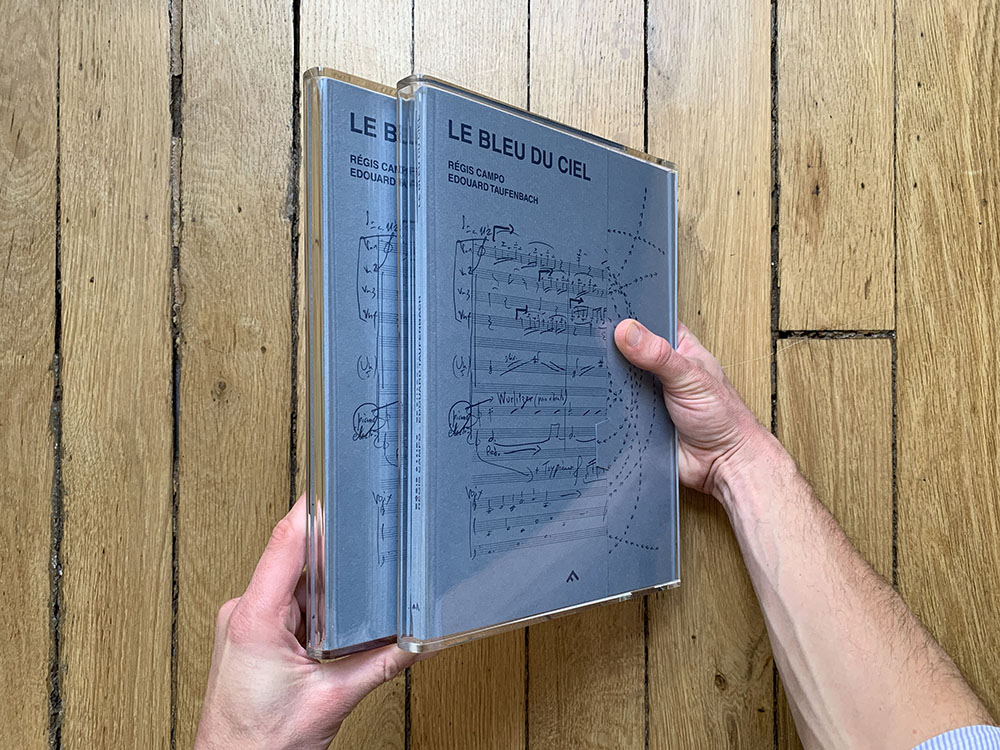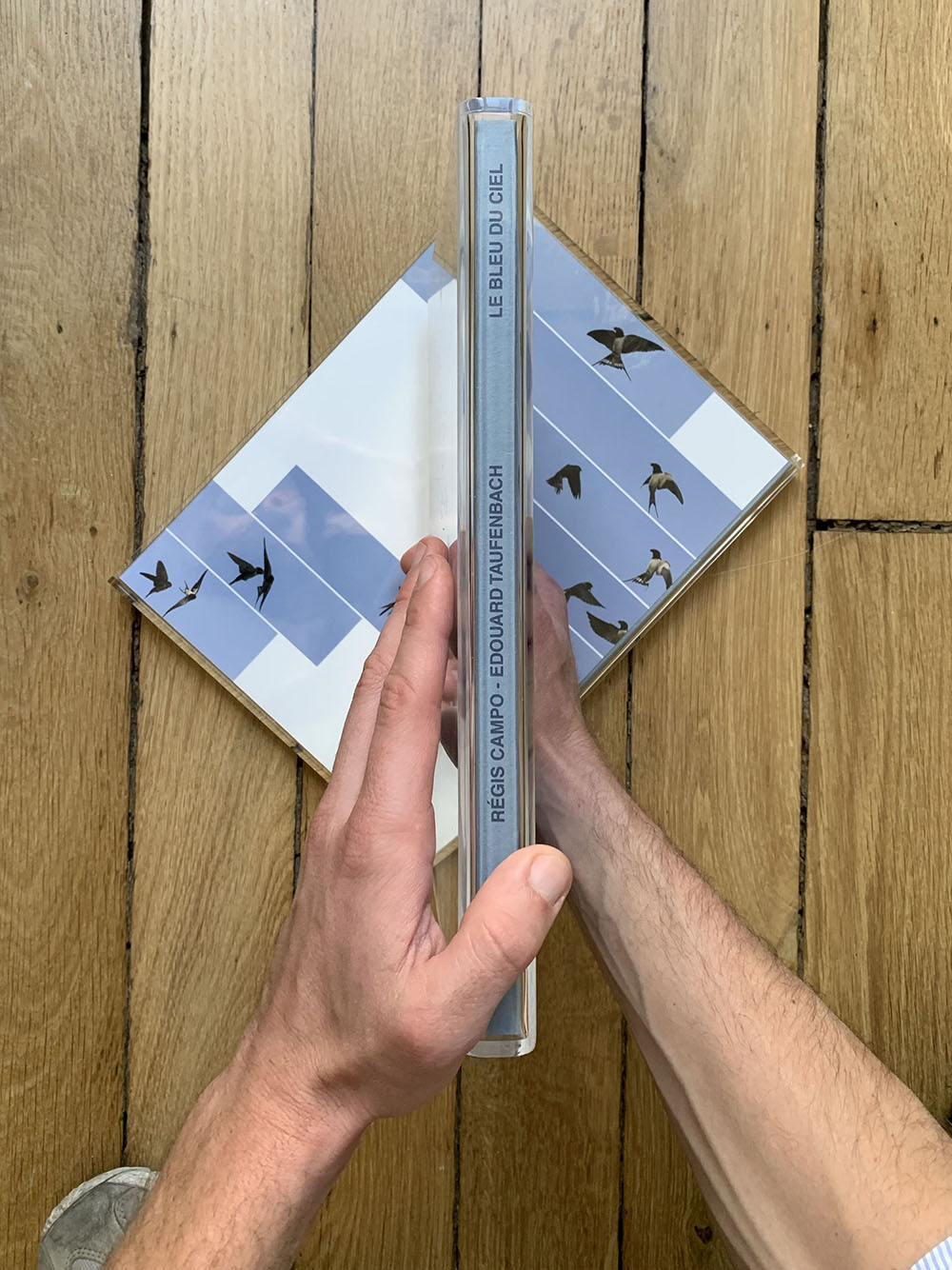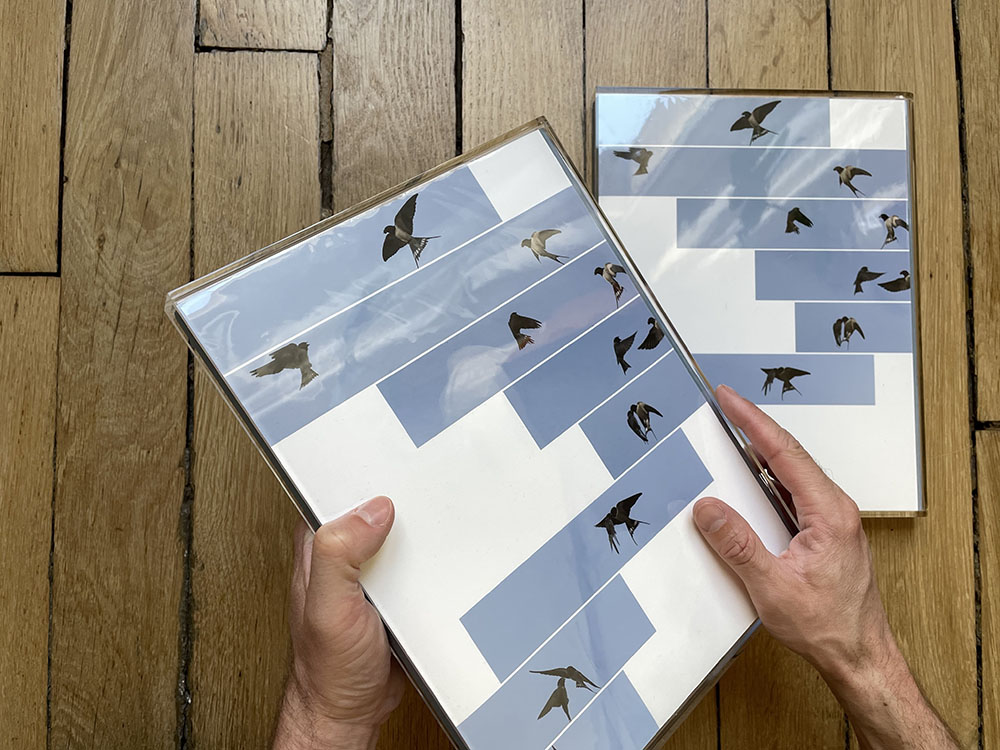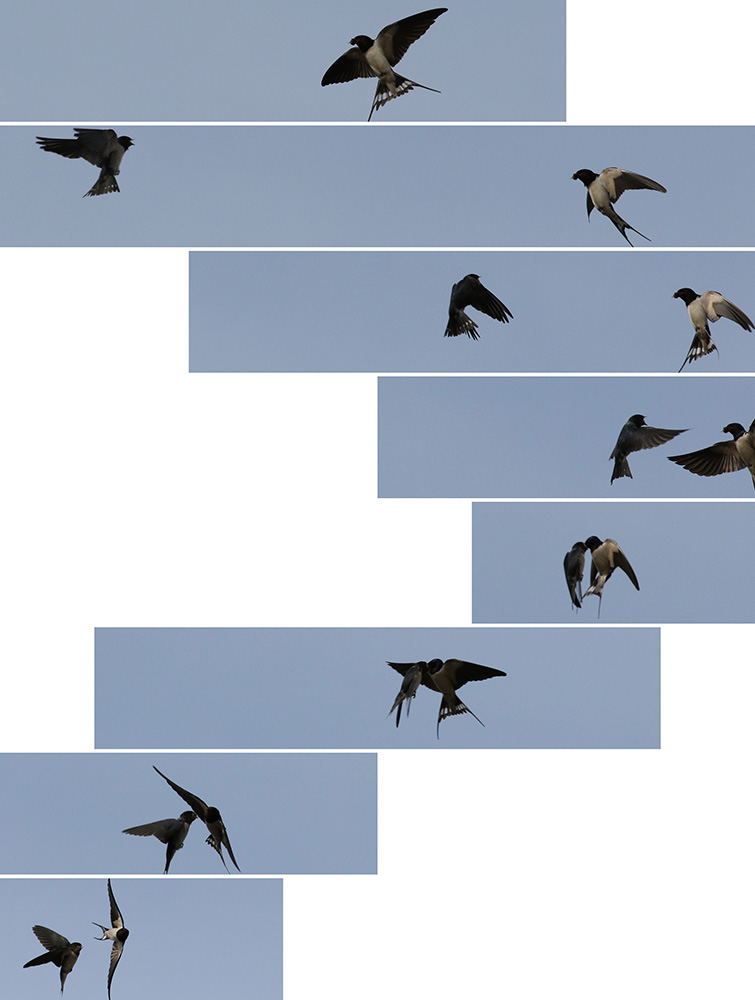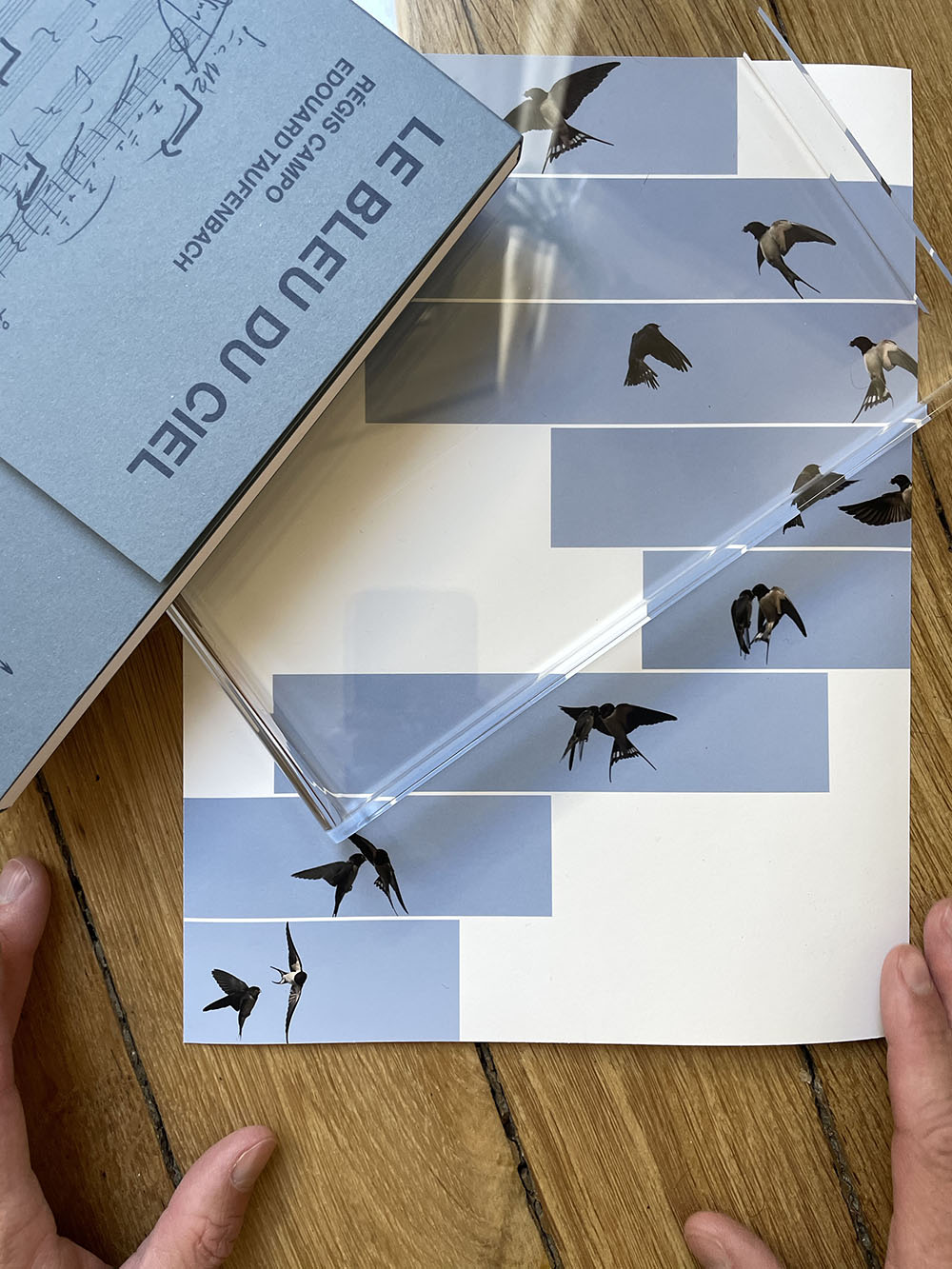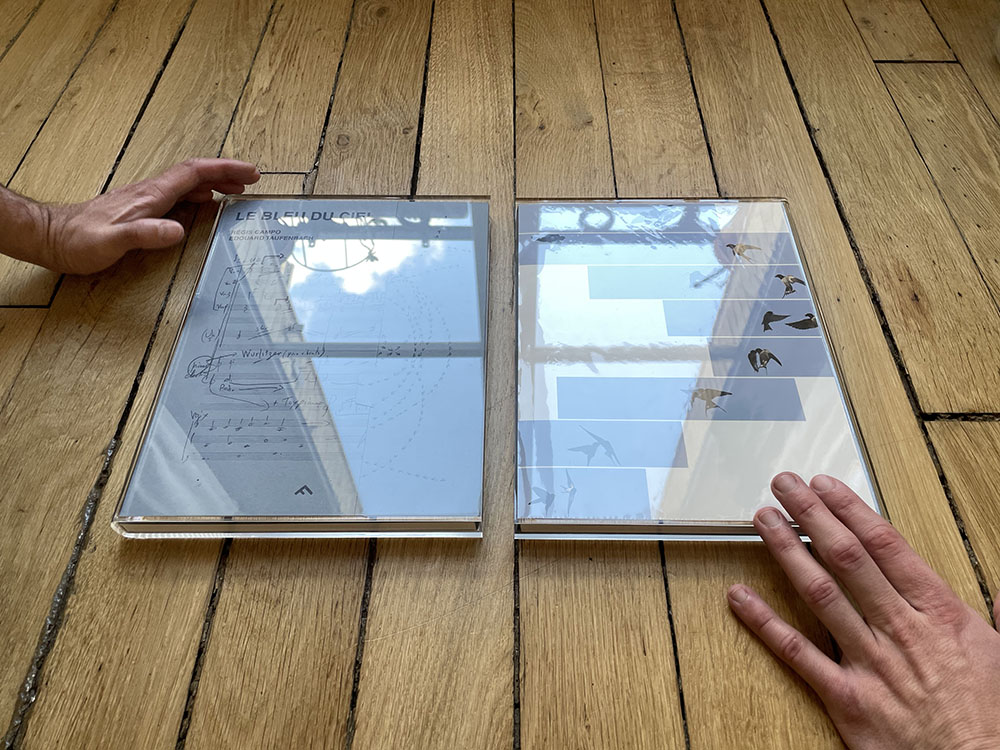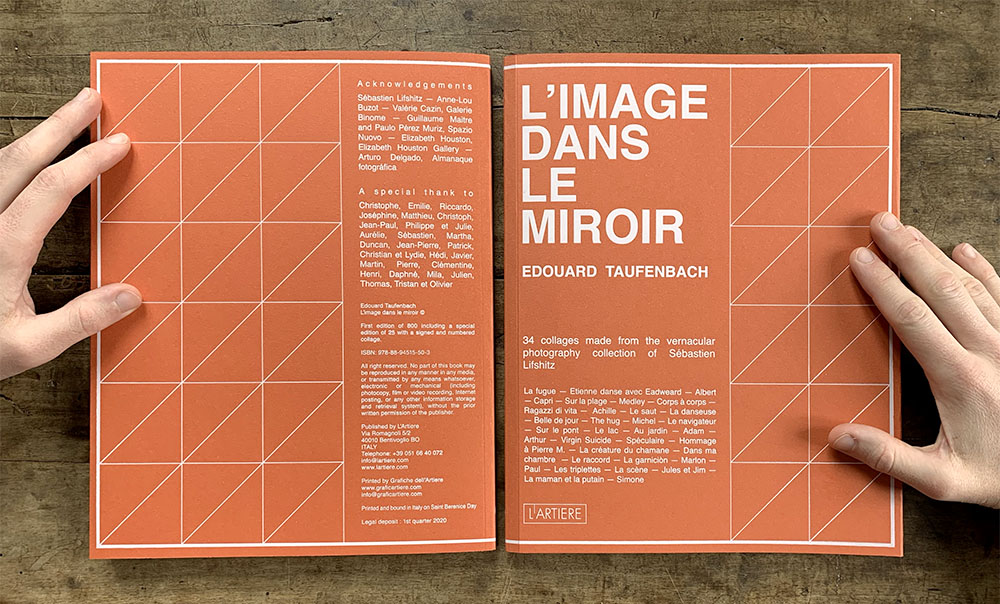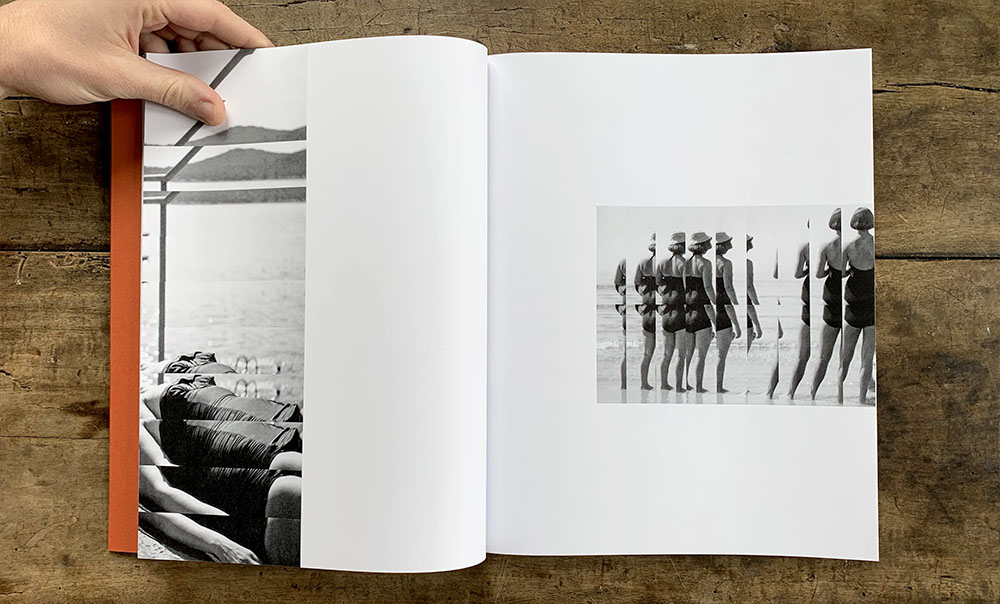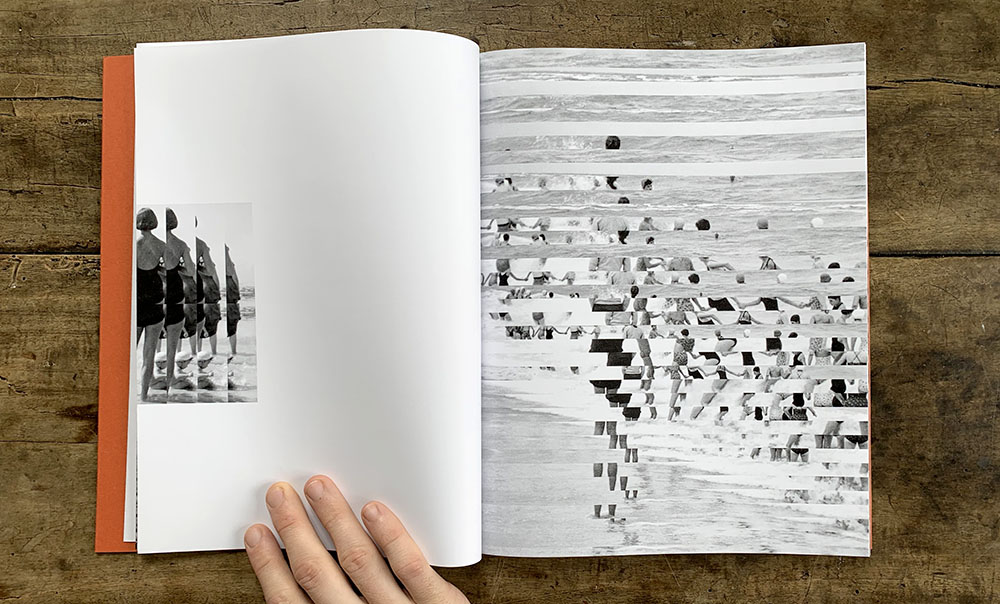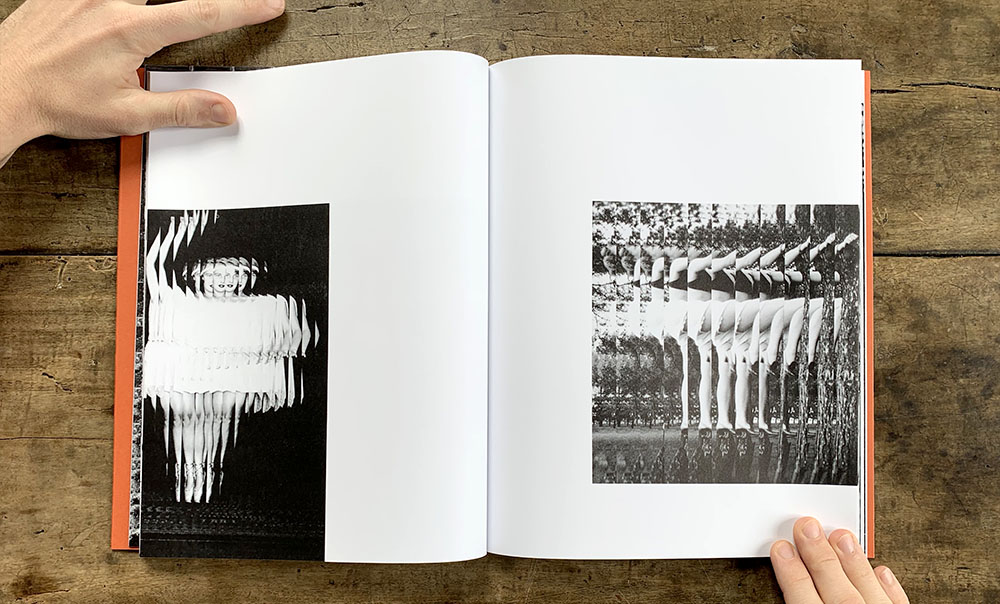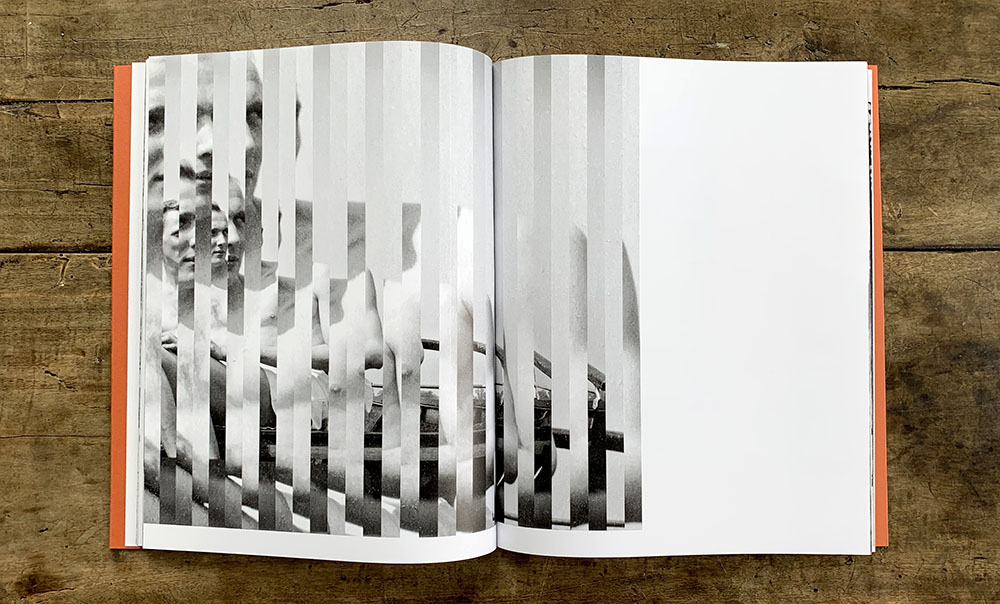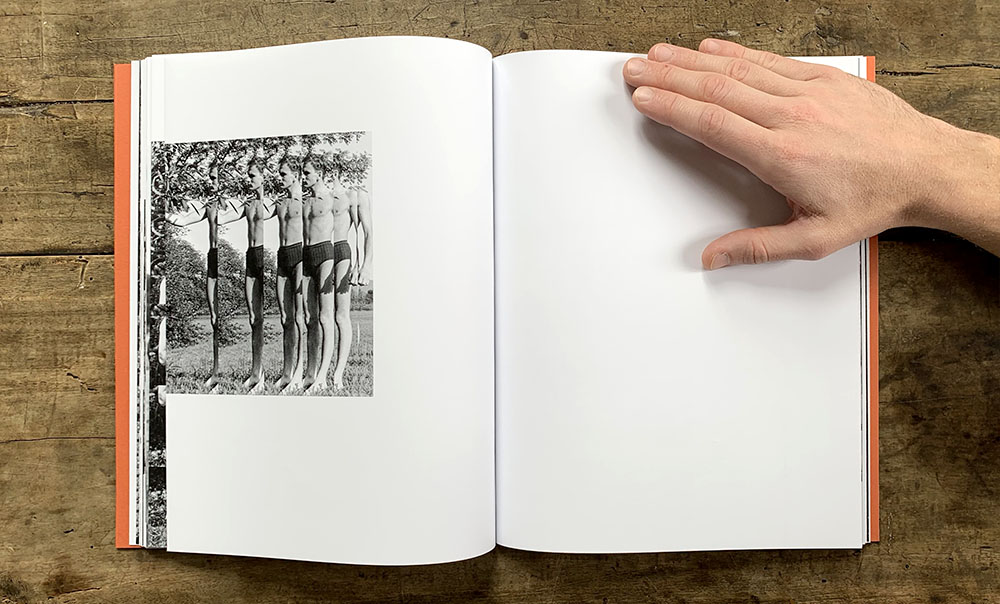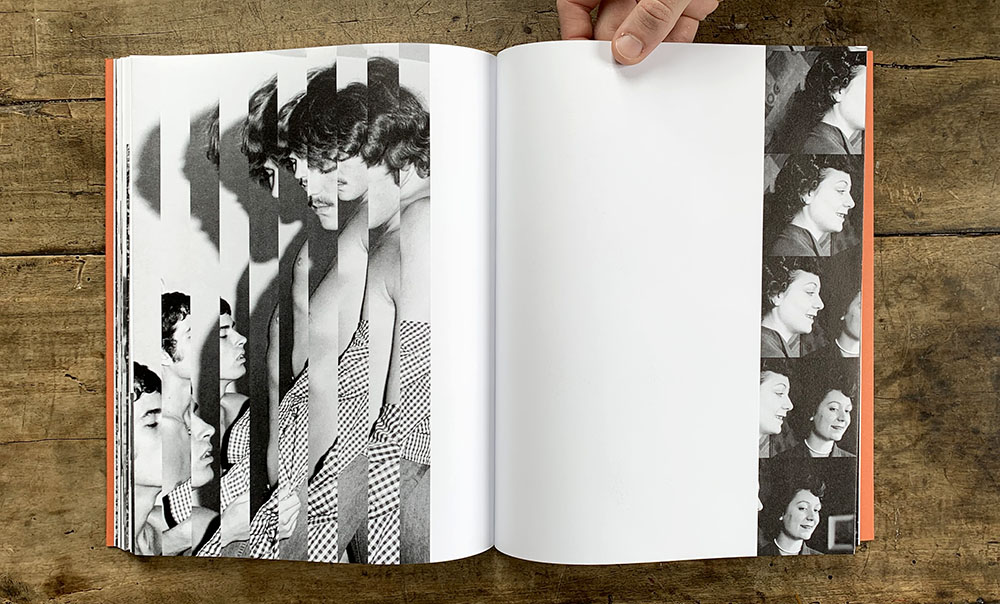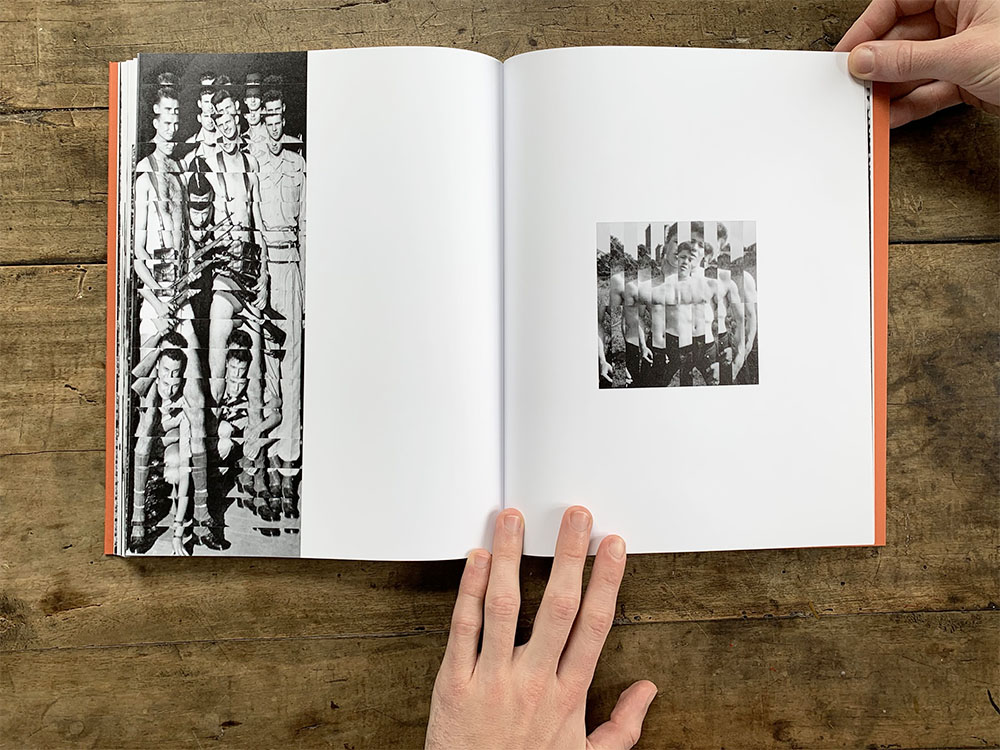Works
←LE JARDIN QUI BASCULE // 2023
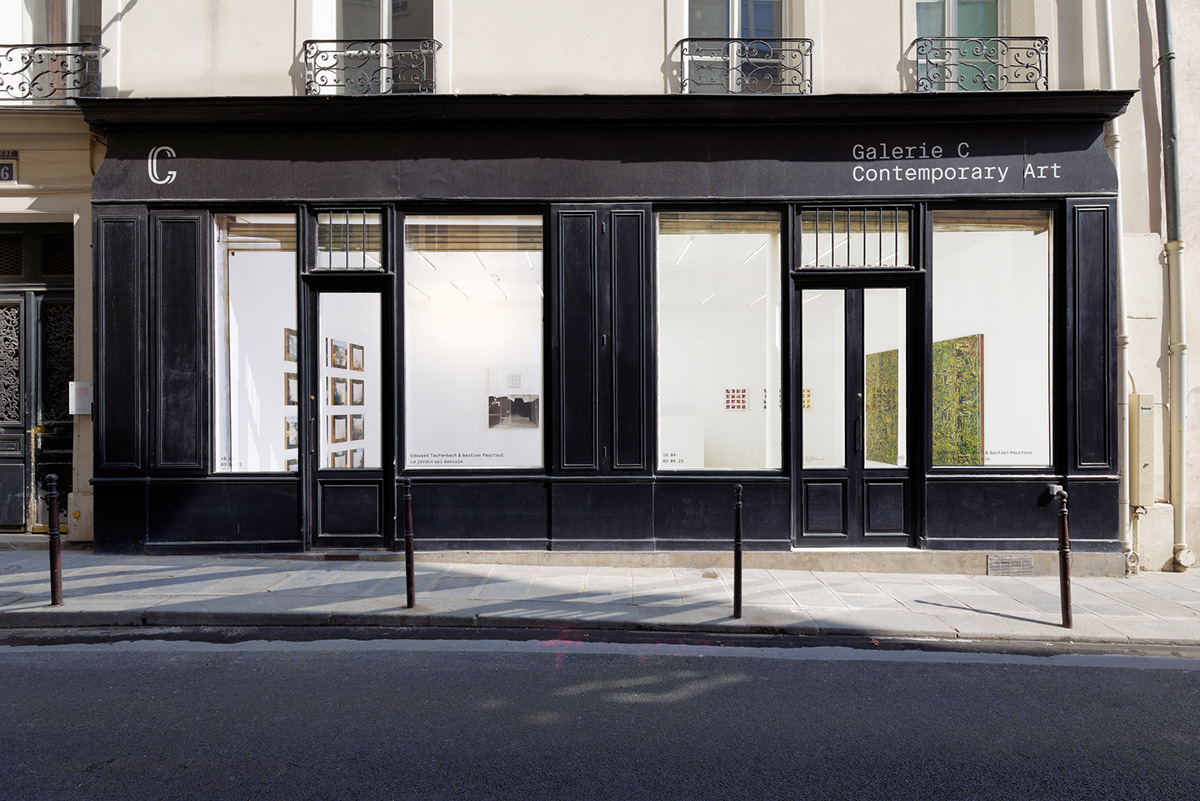
« The Paradise was not vast; perfect, each form bloomed only once; one garden contained them all. »1
Le jardin qui bascule is exhibited at Galerie C in Paris from April 18 to June 3, 2023. This exhibition marks the first collaboration between Gallery C and the artist duo Edouard Taufenbach and Bastien Pourtout.
This project is, first and foremost, an attempt to build a common space, the very space of our relationship. The garden represents this space "between" us, constructed by our two perspectives, shaped by our two bodies, and cultivated by our four hands. It is a vast playground and a place of exchange, where our tastes, curiosities, ways of seeing and touching the world come together and diverge. These gardens are places of tipping points, chiasms, reversals, and false symmetries.
The exhibition plays with the repetition of forms. The recurrence of squares and matrices allows for the creation of passages and paths between the different types of artworks. Shaped by this harmony, visitors have the opportunity to shape their own intimate and mental garden.
The exhibition presents 25 original works divided into 5 typologies: "The Hedges," large silver collages created from foliage photographs; "The Herbier d'ombres" and "Les Glaneurs," series of performances; "The Légendes," photomontages blending photography and drawing; and finally, Swinguing Gardens , the digital extension of this project through a collection of NFTs.
1 André Gide, Le Traité du Narcisse, 1891
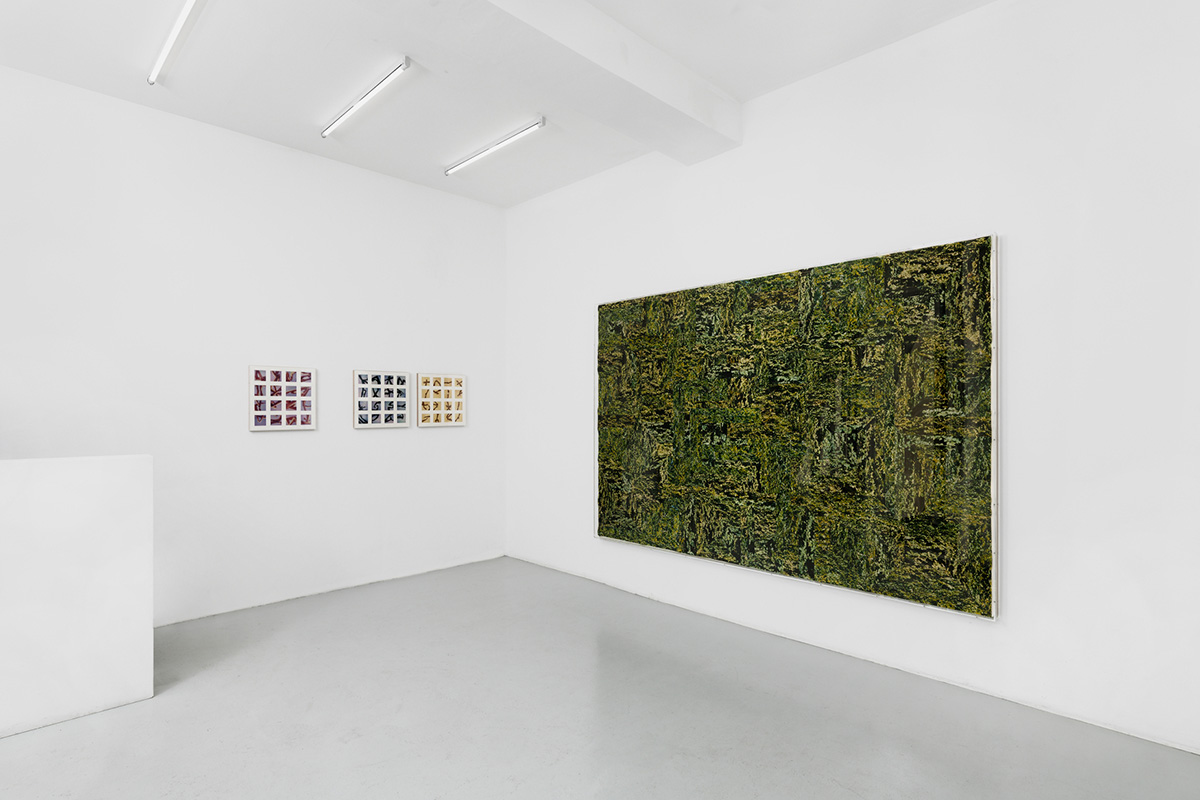
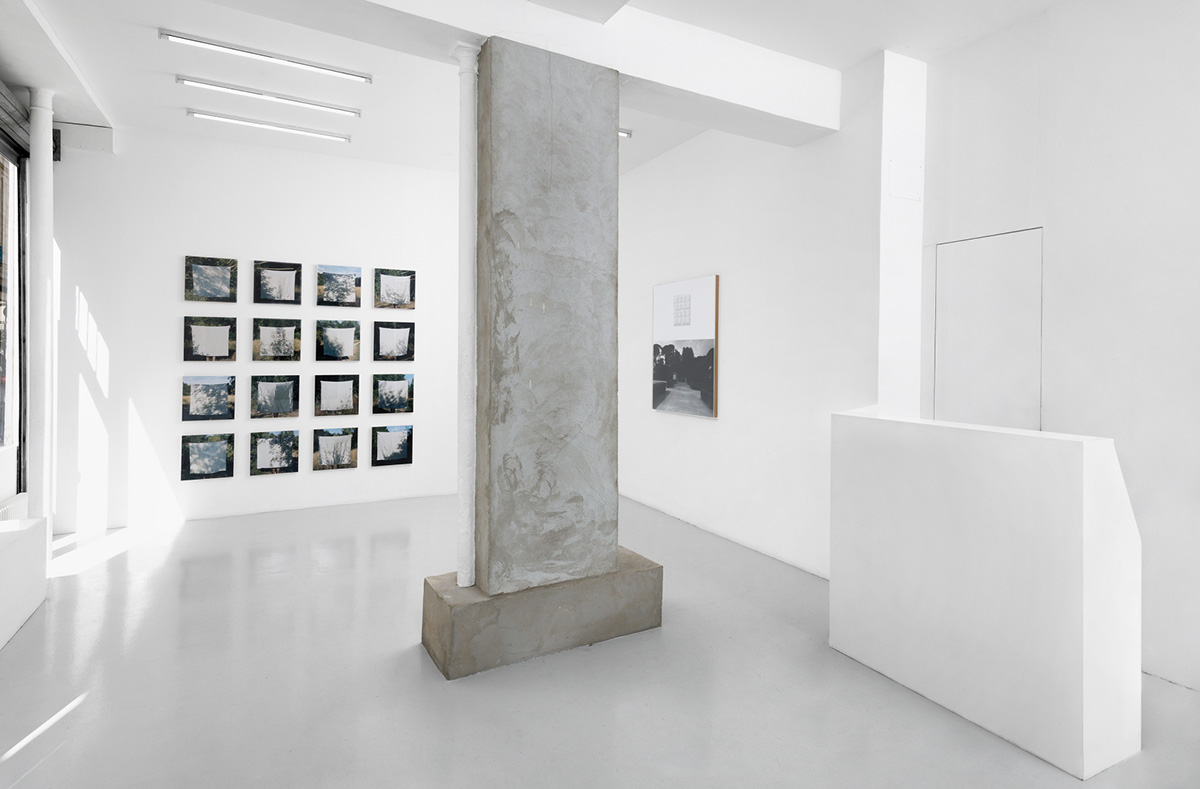
THE EDGES
From large silver prints of plant textures, we create "life-size" collages. In their realization, these artworks, through the use of scales and architecture, reveal pictorial and sensitive surfaces. Like in a labyrinth, the drawing that structures the assembly of elements (visible on the back) fades away, giving way to an immersion conducive to reverie. One seeks their way through this vegetal maze that keeps turning in on itself.
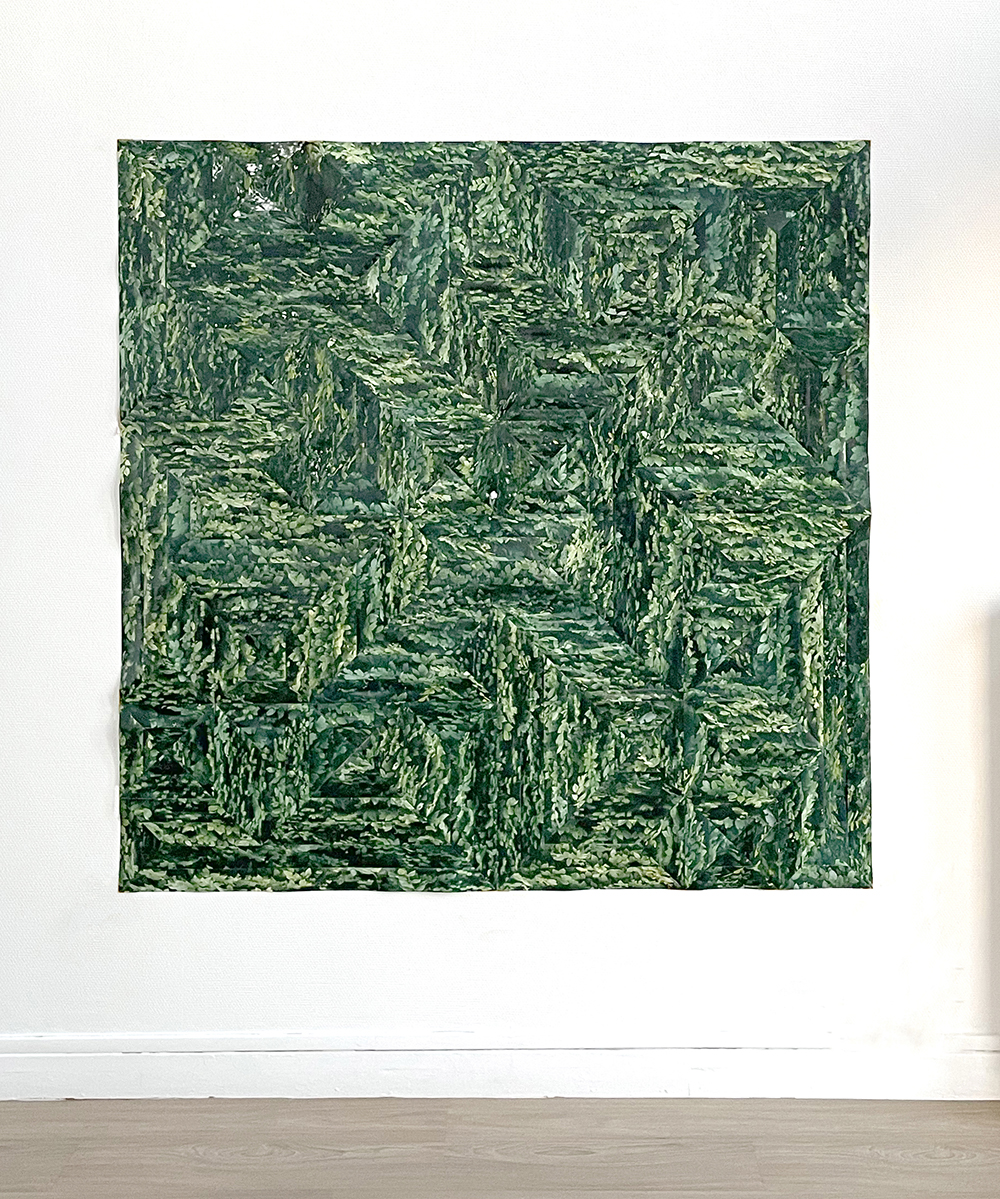

L’HERBIER D’OMBRES
The sheet, alternately stretched by our hands, becomes a screen for projecting vegetal shadows, but also a partition that both conceals and reveals our bodies and the landscape. This tilting play between our two perspectives creates the framework for an intimate and sensual garden. Between shadow and light, this series gives shape to a photographic game of hide-and-seek, where the nature around us is outlined in relief.
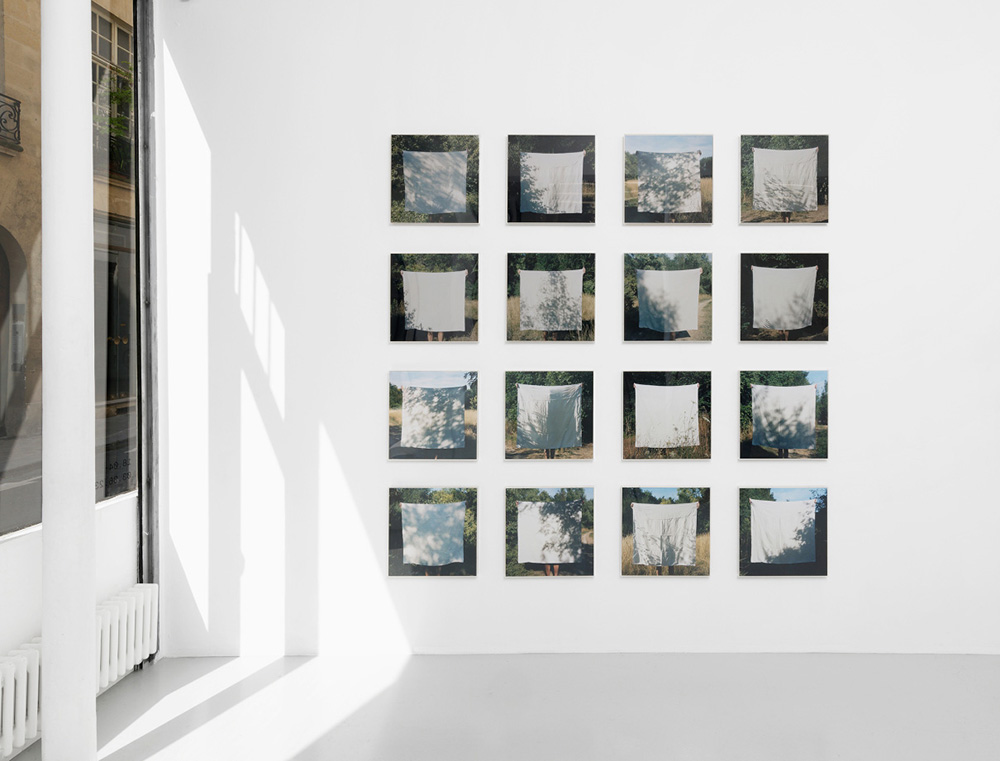

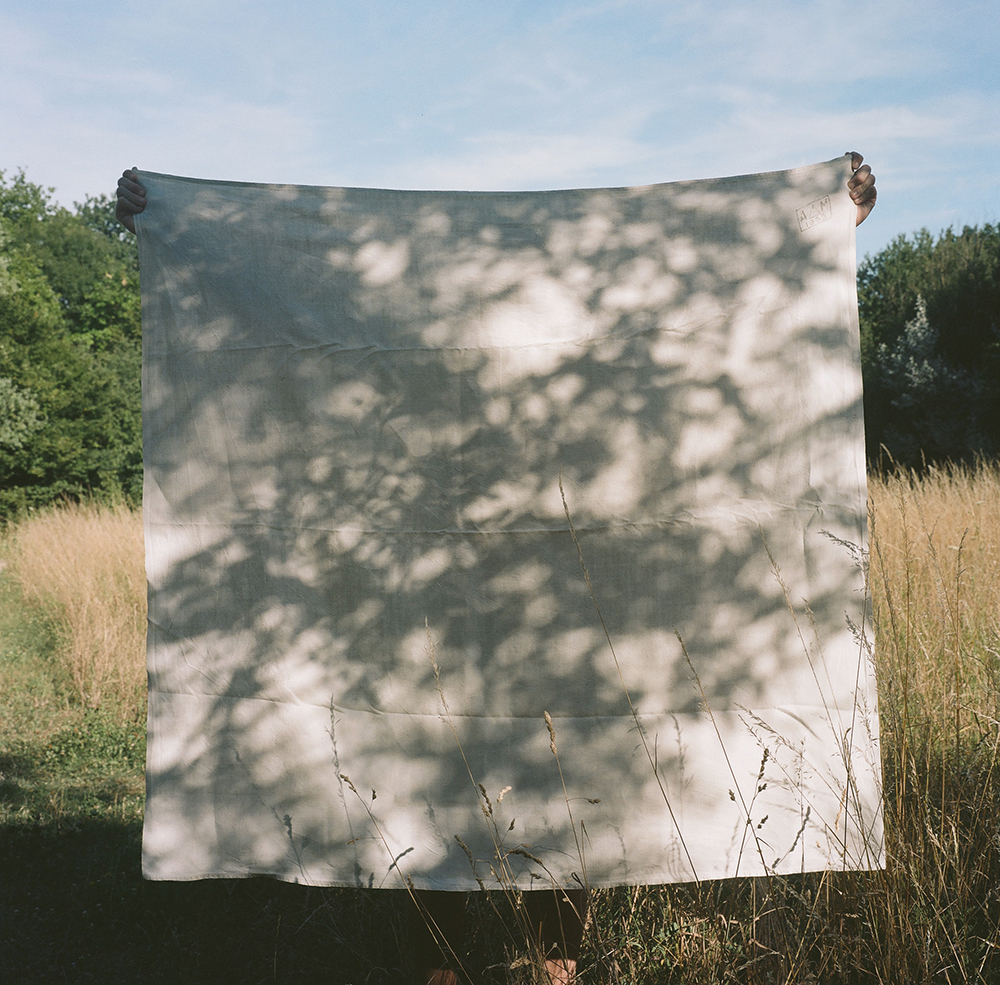
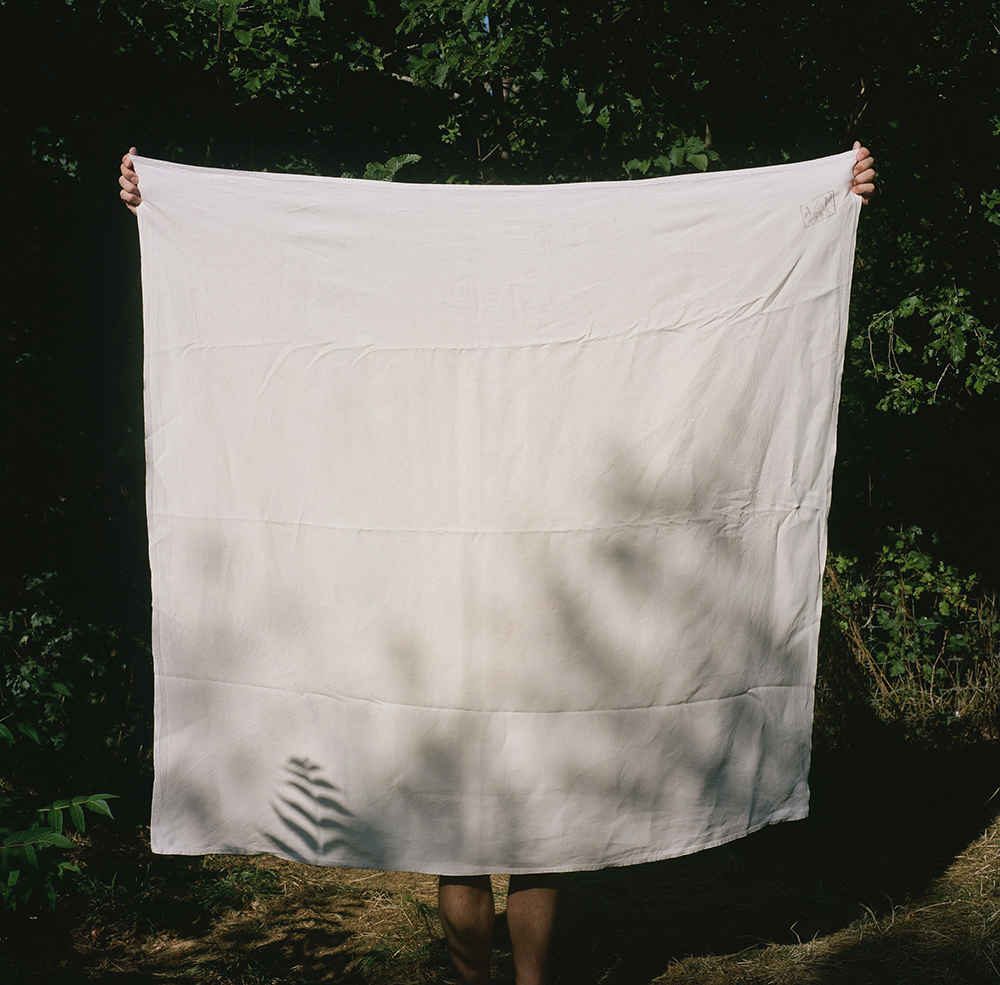
LES LÉGENDES
Les Légendes are photo-drawing montages that create volume, perspectives, and narratives. We use the photogram technique to impress the outline simultaneously with the negative. The result is a fragmented image where the gaze navigates from one side to the other, constructing a representation that exceeds the sum of its parts. Gardens to be crafted, imagined, and dreamed of.
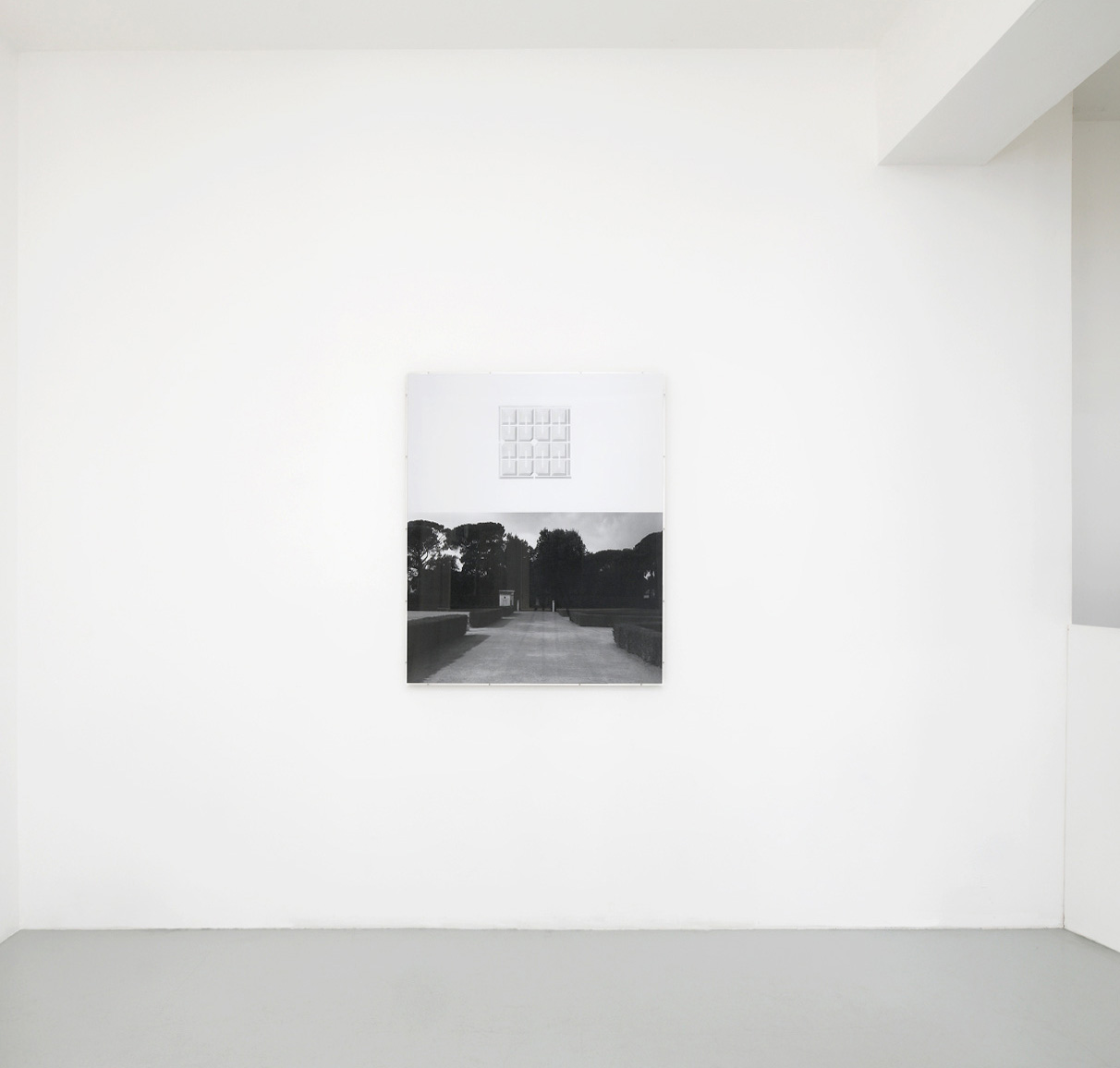
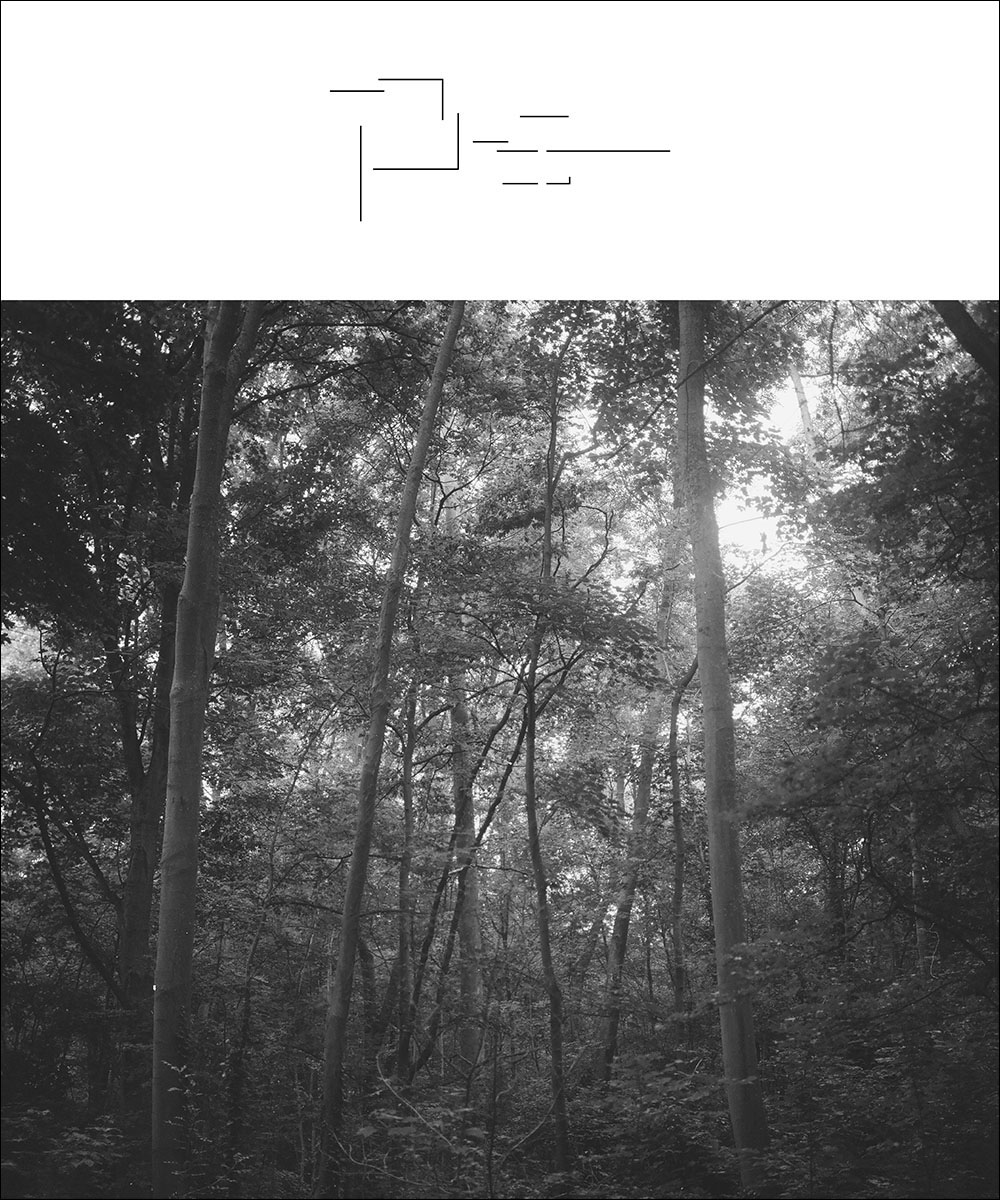
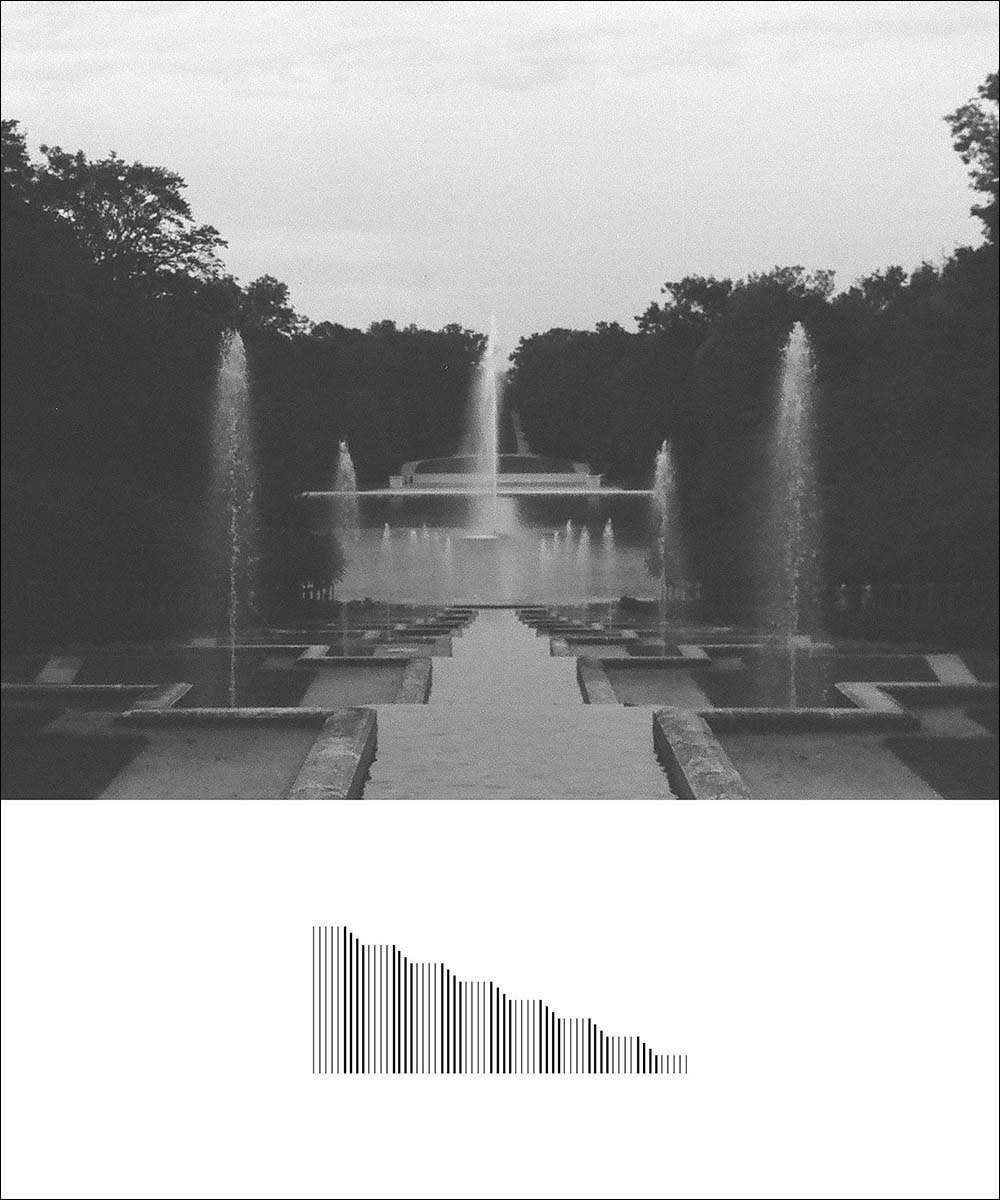
LES GLANEURS
In the series Les glaneurs, the hand is at the heart of the photographic dialogue. Each of us takes turns capturing 8 Polaroids (one film) — when one triggers the shot, the other guides the hand positions. The established protocol explores the variability of arrangements within the confines of the square format frame. The images have no left, right, top, or bottom; they flip and reverse. They are organized in a matrix (4X4) that continues and doubles this work of geometric triangulation. Multiplied by the 16 images in the grid, the gestures form a set of dynamic and articulated lines. They compose repertoires of shapes, like alphabets — intimate choreographies of private signs.
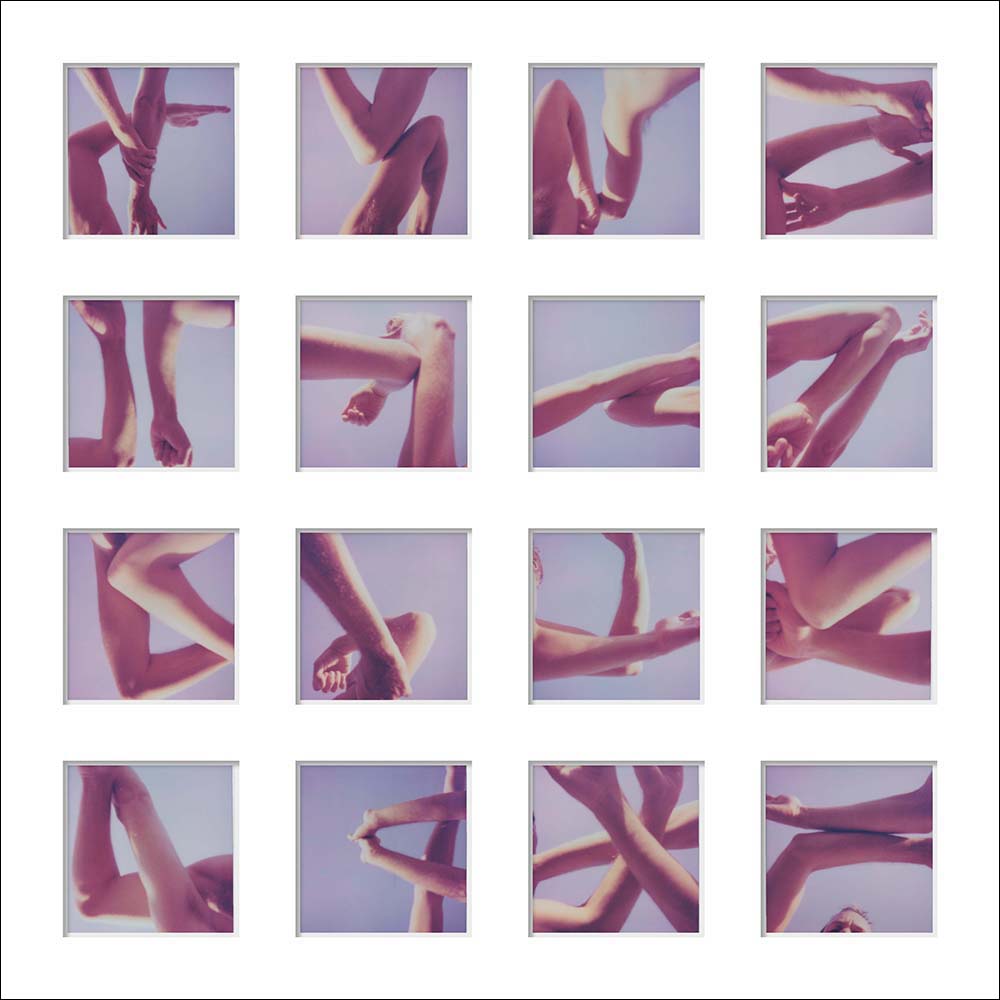
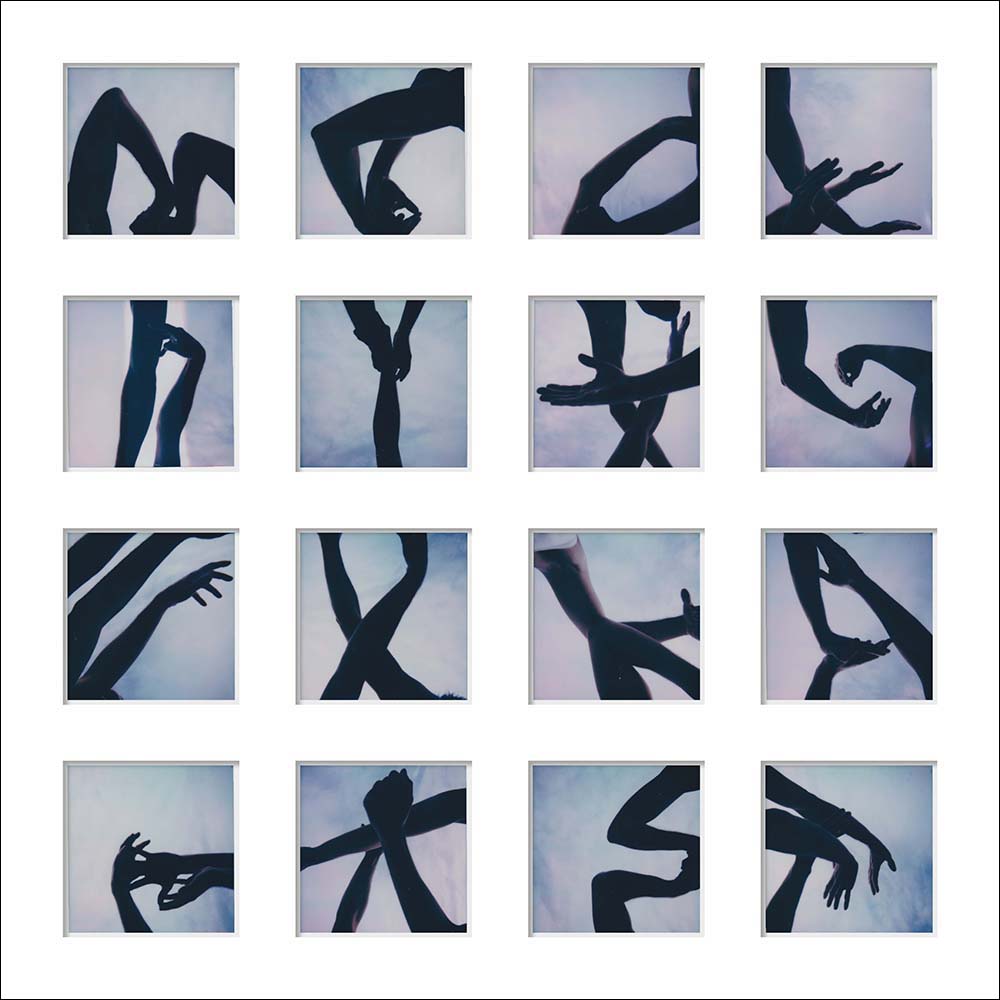
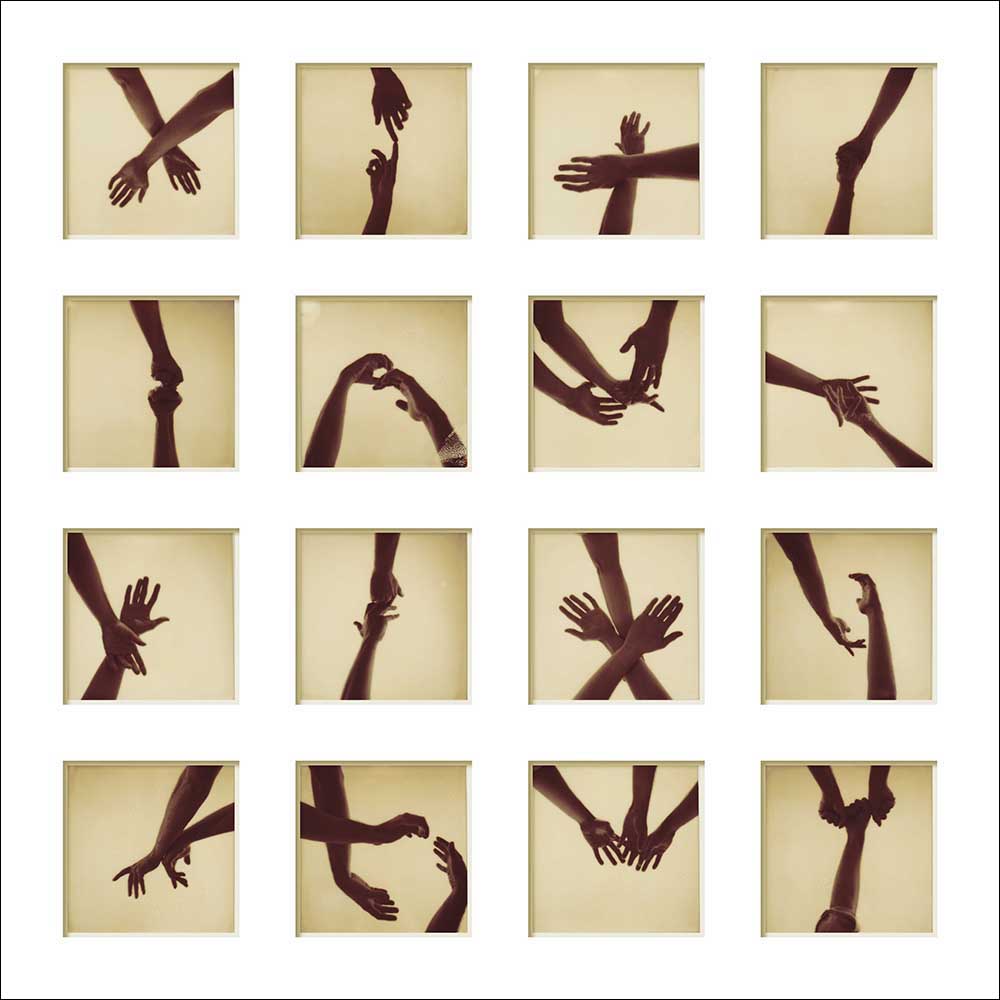
THE SWINGING GARDENS
Swinging Gardens is a collection of NFTs, the digital extension of the physical exhibition. These are crypto-artworks created from silver photographs or digital videos. Configured as perpetual self-turning assemblages, they draw on the formal vocabulary of boxwood laces, Renaissance garden designs, or 17th-century French gardens.
The Swinging Gardens collection is exhibited and marketed on the platform Foundation .
